30 July 2020
Japanese Verb Conjugation 101
(This article was reviewed and edited by native Japanese speakers to ensure accuracy.)
Why do Japanese verbs conjugate?
Japanese verbs conjugate to express tenses, to connect with other phrases, and to show various nuances. Compared to other languages, Japanese conjugation types can be a bit more complicated. There are many different verb forms as well as polite forms. The conjugations can even be combined together!
Ru-verbs, U-verbs, and Irregular Verbs
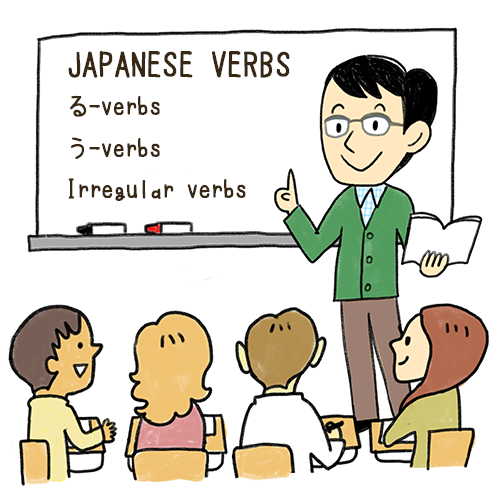
Verbs in Japanese can primarily be categorized into two types: ru-verbs and u-verbs. This refers to a verb’s dictionary form. It’s important to know these two types to understand conjugation rules.
Ru-verbs
Ru-verbs are those that end in る, that have either i or e vowel sounds before the る.
Some examples include 食べる(taberu), 着る(kiru), or 寝る(neru).
U-verbs
U-verbs are any verbs which end in u, which is not a ru-verb. This can be any verb ending like う(u), つ(tsu), む(mu), etc… This also includes verbs ending in る that don’t have an eru or iru ending.
Some examples of u-verbs are 立つ(tatsu), 学ぶ(manabu), 飲む(nomu), and 分かる(wakaru).
U-verbs that look like Ru-verbs
Unfortunately, there are exceptions to the rules and some u-verbs look like ru-verbs. This means that some eru and iru ending verbs are part of u-verbs. These simply have to be memorized.
Here are some common u-verbs that look like ru-verbs: しゃべる(shaberu), 帰る(kaeru), 知る(shiru), 入る(hairu), and 走る(hashiru).
Irregular verbs
There are two main irregular verbs in Japanese that don’t belong in ru-verbs or u-verbs. These are する(suru) and くる(kuru).
Polite and Casual Form


Most verb conjugations have a polite and casual form. Japanese is a language that values politeness. Depending on who you are talking to, it’s important to create different nuances in speech and writing. Navigating the polite and casual form in verb conjugations can help to express politeness or familiarity.
The polite form should be used if talking to those of higher social hierarchy, strangers, or older people. The casual form can be used with friends, family, and those of lower social hierarchy. Understanding when to use polite and casual form is best learned from interacting and observing native Japanese speakers.
Dictionary Form and Present Tense
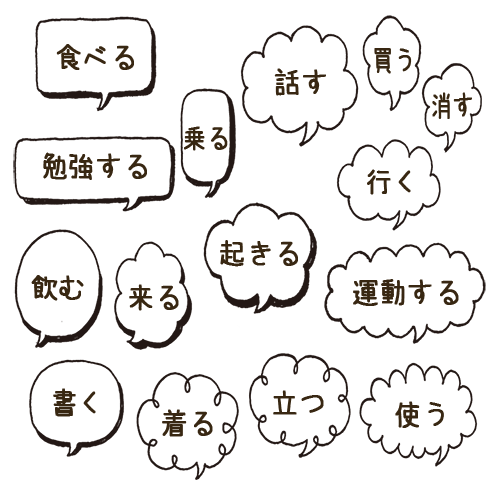

The dictionary form of verbs is the casual present tense of a verb. As the name suggests, it is what can be found in dictionaries to look up verbs. This form is casual and you would only use it with friends and family. All dictionary form verbs end with the u-vowel.
An important thing to note about Japanese present tense is that it can also be used as the future tense.
Here are some examples of the dictionary form or casual present tense:
すしを食べる
Sushi o taberu
I eat sushi
お茶を飲む
Ocha o nomu
I drink tea
In spoken casual Japanese, particles are often dropped. It’s also common to answer by repeating the verb if someone asks you a question. This is because verbs don’t change based on the person it applies to. For example, “I eat” is the same as “she eats” in Japanese.
すし食べる?
Sushi taberu?
Do you want to eat sushi?
食べる。
Taberu.
(yes) I (want to) eat.
Since there’s no future tense, the dictionary form can apply to both present and future. The only way to figure out the tense is through context.
明日、学校行く。
Ashita, gakkou iku.
Tomorrow, I will go to school.
Negative Casual Present Tense:
To conjugate ru-verbs to the negative casual present tense you simply need to drop the る and add ない.
すしを食べる → すしを食べない
Sushi o taberu → Sushi o tabenai
I eat sushi → I don’t eat sushi
For u-verbs it’s easier to look at the romaji to change to the negative form. You need to drop the u and add anai to the end. If you prefer to conjugate with Japanese characters, you can also look at the hiragana ending of the u-verb and change it to the first hiragana in the same row, with an added ない.
お茶を飲む → お茶を飲まない
Ocha o nomu → Ocha o nomanai
I drink tea → I don’t drink tea
For irregular verbs, they don’t follow any rules and can only be memorized. They will change to the negative as follows:
くる → こない
kuru → konai
I come → I don’t come
する → しない
suru → shinai
I do → I don’t do
There is a special rule for verbs which end in う. They will change as if there is a w in front of the u.
買う → 買わない
ka(w)u → kawanai
I buy → I don’t buy
Here is an example of the casual negative present tense being used as the future tense. As discussed earlier, knowing if it is present or future tense relies only on the context.
明日学校行かない。
Ashita gakkou ikanai.
Tomorrow I won’t go to school.
This form can also be used as a way to make suggestions. You can make a suggestion by making it a question.
今日すし食べない?
Kyou sushi tabenai?
Do you want to eat sushi today?
To answer this question, you can use the negative and affirmative casual present tense.
yes: 食べる (taberu)
no: 食べない (tabenai)
Polite Present Tense
The polite present tense can be made by adding ます and ません. This is the form you should normally use unless with close friends, family, and those of lower social hierarchy.
For ru-verbs you only need to drop the る and add ます or ません(the negative form).
すしを食べる → すしを食べます
Sushi o taberu → Sushi o tabemasu
I eat sushi → I eat sushi (polite form)
すしを食べる → すしを食べません
Sushi o taberu → Sushi o tabemasen
I eat sushi → I don’t eat sushi (polite form)
For u-verbs you should drop the u and add imasu or imasen. If you prefer to conjugate with the Japanese characters, you should look at the hiragana of the verb ending and change it to the second hiragana in the same row. Then, add ます or ません at the end.
お茶を飲む → お茶を飲みます
Ocha o nomu → Ocha o nomimasu
I drink tea → I drink tea (polite form)
お茶を飲む → お茶を飲みません
Ocha o nomu → Ocha o nomimasen
I drink tea → I don’t drink tea (polite form)
The irregular verbs change to the polite form in the following ways:
する → します(affirmative)/しません(negative)
suru → shimasu/shimasen
くる → きます(affirmative)/きません(negative)
kuru → kimasu/kimasen
To make it a polite question, you can add か after the ます.
すし食べますか?
Sushi tabemasuka?
Would you like to eat sushi?
yes: 食べます (tabemasu)
no: 食べません (tabemasen)
To make it a suggestion, you can use the negative polite form and add か. It’s a softer nuance than adding か to the affirmative polite form.
一緒に食べませんか?
Issho ni tabemasenka?
Would you like to eat together?
ず-form
This is a useful conjugation that works on the negative casual present tense verb. You can take off the ない and replace it with ず.
食べない → 食べず
tabenai → tabezu
飲まない → 飲まず
nomanai → nomazu
The irregular verbs changes as follows:
する → せず
suru → sezu
くる → こず
kuru → kozu
This form doesn’t appear by itself and connects with other verbs. It can be used to make phrases that indicate that an action was done without doing the other action. In most cases it’s followed by に to make the phrase sound smoother.
朝ごはんを食べずに会社に行った。
Asagohan o tabezu ni kaisha ni itta.
I went to work without eating breakfast.
お茶を飲まずに会社に行った。
Ocha o nomazu ni kaisha ni itta.
I went to work without drinking tea.
Past Tense
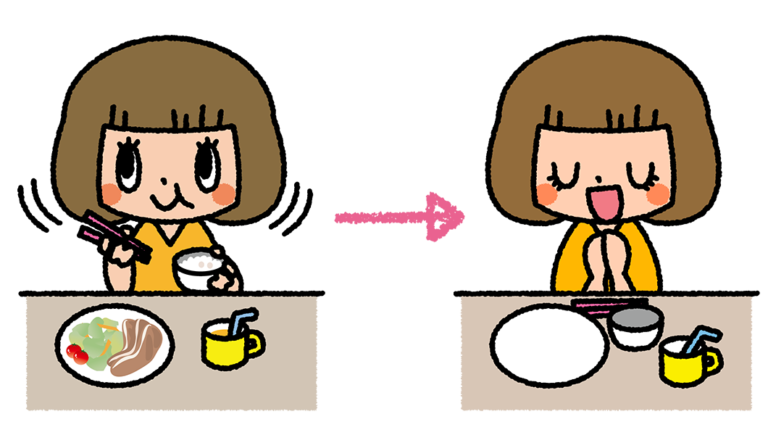

Casual Past Tense
The casual past tense, which is also sometimes called ta-form, ends in た or だ. The negative form has the ending なかった.
For ru-verbs it is an easy conjugation where you drop the る and add た.
すしを食べる → すしを食べた
Sushi o taberu → Sushi o tabeta
I eat sushi → I ate sushi
For u-verbs there are more rules. う(u), つ(tsu), and る(ru) ending verbs will change to った(tta). む(mu), ぬ(nu), and ぶ(bu) ending verbs will change to んだ(nda). く(ku) changes to いた(ita), ぐ(gu) changes to いだ(ida), and す(su) changes to した(shita).
In the case of 飲む, it will change to んだ.
お茶を飲む → お茶を飲んだ
Ocha o nomu → Ocha o nonda
I drink tea → I drank tea
The irregular verbs follow their own rules:
くる → きた
kuru → kita
する → した
suru → shita
You can also form questions with the casual past tense by adding a question mark.
昨日、すし食べた?
Kinou, sushi tabeta?
Did you eat sushi yesterday?
Negative form
The negative form of the casual past tense has the same rule for all verb types. Take the ない form of the verb and replace ない with なかった. The nai-form of the verb is the negative casual present tense (negative version of the dictionary form).
すしを食べない → すしを食べなかった
Sushi o tabenai → Sushi o tabenakatta
I don’t eat sushi → I didn’t eat sushi
お茶を飲まない → お茶を飲まなかった
Ocha o nomanai → Ocha o nomanakatta
I don’t drink tea → I didn’t drink tea
昨日、すし食べなかった。
Kinou, sushi tabenakatta.
Yesterday, I didn’t eat sushi.
Polite Past Tense
To form the polite past tense you can take the polite present tense, and replace the ます ending with ました.
すしを食べます → すしを食べました
Sushi o tabemasu → Sushi o tabemashita
I eat sushi (polite form) → I ate sushi (polite form)
お茶を飲みます → お茶を飲みました
Ocha o nomimasu → Ocha o nomimashita
I drink tea (polite form) → I drank tea (polite form)
The polite past tense can also become a question by adding か. Unlike in present tense, this only applies to the affirmative and not the negative form.
昨日、すしたべましたか?
Kinou, sushi tabemashitaka?
Did you eat sushi yesterday? (polite form)
Negative form
The negative form of the polite past tense can be made by adding でした to the negative polite present tense.
すしを食べません → すしを食べませんでした
Sushi o tabemasen → Sushi o tabemasendeshita
I don’t eat sushi (polite form) → I didn’t eat sushi (polite form)
お茶を飲みません → お茶を飲みませんでした
Ocha o nomimasen → Ocha o nomimasendeshita
I don’t drink tea (polite form) → I didn’t drink tea (polite form)
昨日は学校に行きませんでした。
Kinou wa gakkou ni ikimasendeshita.
I didn’t go to school yesterday (polite form)
Te-form
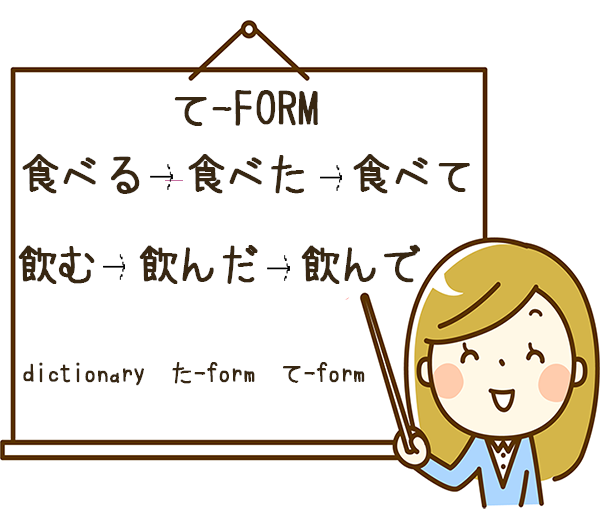

This form is useful for making requests and connecting sentences. If you already know the past tense, it follows similar rules.
Here is how to form the causal te-form:
Any verb which ends in た in the past tense, changes to て.
すしを食べた → すしを食べて
Sushi o tabeta → Sushi o tabete
I ate sushi → Please eat sushi
Verbs that end in だ in the past tense, will change to で.
お茶を飲んだ → お茶を飲んで
Ocha o nonda → Ocha o nonde
I drank tea → Please drink tea
The negative and polite te-forms follow the same rules regardless of verb type. The negative te-form can be made using the negative dictionary form with an added で.
すし食べない → すし食べないで!
Sushi tabenai → sushi tabenaide!
I don’t eat sush→ Don’t eat sushi!
For the polite form, you can create it by adding ください to the te-form.
すしを食べて → すしを食べてください
Sushi o tabete → Sushi o tabetekudasai
Please eat sushi → Please eat sushi (polite form)
すしを食べないで → すしを食べないでください。
Sushi o tabenaide → Sushi o tabenaidekudasai.
Don’t eat sushi → Please don’t eat sushi (polite form)
In the previous examples, the te-form was at the end of the phrase. In these cases it acts to make a request.
If the te-form is in the middle of the sentence it usually connects phrases and verbs together.
すし食べてみる?
Sushi tabete miru?
Do you want to try eating sushi?
すし食べていく?
Sushi tabete iku?
Do you want to go eat sushi?
Te-form can also work to connect a series of actions. It acts as the word “then” in English.
昨日会社に行って仕事した。
Kinou kaisha ni itte shigoto shita.
Yesterday, I went to my company and (then) I worked.
よう、しょう form
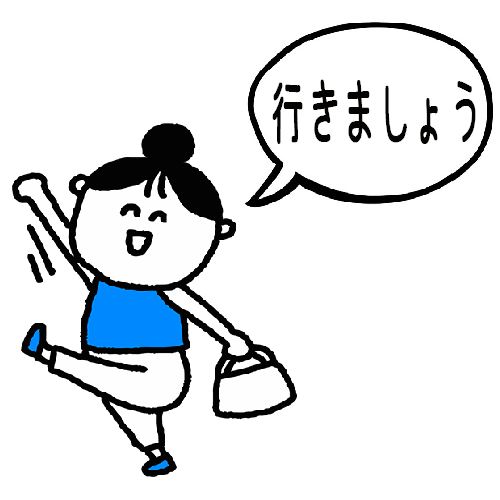

This is also called the volitional form and expresses an intention or thought about doing something (if talking about yourself). It can also mean something similar to “let’s” or “shall we” in English if it includes other people. The ending (よ)う is the informal form and しょう is the polite form.
Casual Form
Ru-verbs
For ru-verbs, the casual form can be made by dropping the る from the dictionary form and adding よう.
すしを食べる → すしを食べよう
Sushi o taberu → Sushi o tabeyou
I eat sushi → Let’s eat sushi
U-verbs
For u-verbs, the informal form is made by dropping the u of the dictionary form and adding ou. If looking at the Japanese characters, take the last hiragana of the dictionary form, and change it to the last hiragana in the same row. Then simply add う to the end.
お茶を飲む → お茶を飲もう
Ocha o nomu → Ocha o nomou
I drink tea → let’s drink tea
For irregular verbs, they change in the following manner:
くる → こよう
kuru → koyou
する → しよう
suru → shiyou
さ、仕事しよう。
Sa, shigoto shiyou.
I think I’ll work (now).
If you add よ, it can be clear that you are talking to someone else and not about yourself. This is usually a childish or feminine way of speech but it can add a nuance that is more insistent.
すし食べようよ。
Sushi tabeyouyo.
Let’s eat sushi.
Polite
For the polite form, take the polite present tense and drop the す. Then, replace that with しょう. This works with all verb types.
すしを食べます → すしを食べましょう
Sushi o tabemasu → Sushi o tabemashou
I eat sushi (polite form) → let’s eat sushi (polite form)
お茶を飲みます → お茶を飲みましょう
Ocha o nomimasu → Ocha o nomimashou
I drink tea (polite form) → let’s drink tea (polite form)
仕事に戻りましょう。
Shigoto ni modorimashou.
Let’s return to work.
よ can also be added to the polite form to be more insistent. Unlike in the casual form, this way of speech sounds feminine but not childish.
早く行きましょうよ。
Hayaku ikimashou yo.
Let’s go quickly.
Potential Form
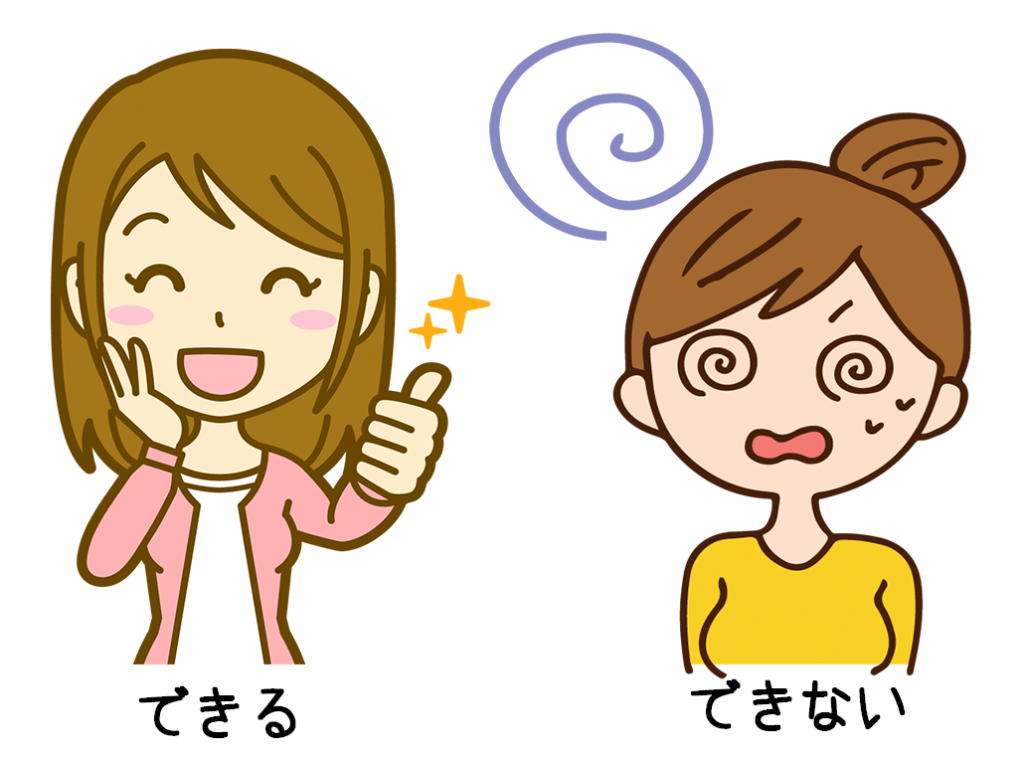

This form can be used to express the ability to do something. It is similar to “can” and “can not” in English.
Ru-verbs
The casual potential form can be made by dropping the る and adding (ら)れる or (ら)れない. The ら is often taken out to be smoother in daily speech and writing. Notice that the を preceding the dictionary form must change to が when changing to potential form.
すしを食べる → すしが食べ(ら)れる or すしが食べ(ら)れない
Sushi o taberu → Sushi ga taberareru or Sushi ga taberarenai
I eat sushi → I can eat sushi or I can’t eat sushi
U-verbs
To make the casual potential form with u-verbs, it’s necessary to drop the u and add eru or enai (negative form) to the end. If looking at the Japanese characters you can change the last hiragana of the verb to the fourth hiragana in the same row and add る or ない.
お茶を飲む → お茶が飲める or お茶が飲めない
Ocha o nomu → Ocha ga nomeru or Ocha ga nomenai
I drink tea → I can drink tea or I can’t drink tea
Irregular Verbs
These will change to the casual potential form as follows:
する → できる/できない
suru → dekiru/dekinai
くる → こられる/こられない
kuru → korareru/korarenai
Here are some examples of the casual potential form:
生の魚、食べれる?
Nama no sakana, tabereru?
Can you eat raw fish?
yes: 食べれる。(tabereru)
no: 食べれない。(taberenai)
忙しくて行けない。
Isogashikute ikenai.
I’m too busy and I can’t go.
Polite form
For the polite potential form, take the casual potential form and drop the る. Then, add ます or ません(negative form).
すしが食べられる → すしが食べられます or すしが食べられません
Sushi ga taberareru → Sushi ga taberaremasu or Sushi ga taberaremasen
I can eat sushi → I can eat sushi or I can’t eat sushi (polite form)
お茶が飲める → お茶が飲めます or お茶が飲めません
Ocha ga nomeru → Ocha ga nomemasu or Ocha nomemasen
I can drink tea → I can drink tea or I can’t drink tea (polite form)
Here are some example sentences:
今、会社に来れますか?
Ima, kaisha ni koremasuka?
Could you come to work now?
まだ会社に行けません。
Mada kaisha ni ikemasen.
I can’t go to work yet.
Passive
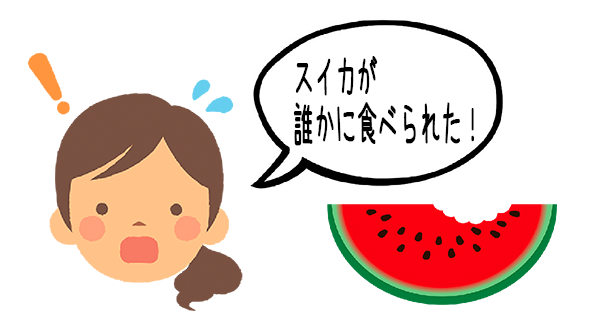

In Japanese, passive verbs can be used often. Unlike in English, the passive verb can also convey politeness because it doesn’t directly address the person that the action affects. It is especially common in formal writing.
Ru-verbs
In the passive form, ru-verbs look exactly the same as the potential form. However, make sure not to take out ら in the passive form of the verb. For the passive verb to work there must be an object in the beginning of the sentence.
熊に食べられる。
Kuma ni taberareru.
I will get eaten by a bear.
熊に食べられない。
Kuma ni taberarenai.
I will not get eaten by a bear.
The polite form:
熊に食べられます。
Kuma ni taberaremasu.
I will get eaten by a bear. (polite form)
熊に食べられません。
Kuma ni taberaremasen.
I will not get eaten by a bear. (polite form)
U-verbs
These verbs change to passive form by taking the negative present tense, dropping ない, and adding れる or れない (negative form).
お財布を盗まない → お財布が盗まれる or お財布が盗まれない
Osaifu o nusumanai → Osaifu ga nusumareru or Osaifu ga nusumarenai
I don’t steal the wallet → the wallet will get stolen or the wallet won’t get stolen
Irregular verbs
For the irregular verbs, change to the passive in the following ways:
する → される
suru → sareru
くる → こられる
kuru → korareru
Polite form
To make the passive form polite, take the る from the informal passive form and add ます or ません (negative form).
お財布が盗まれる → お財布が盗まれます
Osaifu ga nusumareru → Osaifu ga nusumaremasu
The wallet will get stolen → The wallet will get stolen (polite form)
お財布が盗まれる → お財布が盗まれません
Osaifu ga nusumareru → Osaifu ga nusumaremasen
The wallet will get stolen → The wallet won’t get stolen (polite form)
Other uses
The passive form is often used in the past tense and when unwanted events occur. To make the passive form into past tense, conjugate the passive form as a ru-verb by adding た.
車に轢かれたの?大丈夫?
Kuruma ni hikaretano? Daijoubu?
You were run over by a car? Are you ok?
今日財布盗まれた。
Kyou osaifu nusumareta.
My wallet was stolen today.
今日財布盗まれました。
Kyou osaifu nusumaremashita.
My wallet was stolen today. (polite form)
Here are some examples of unwanted events where you might use the passive form.
去年、妻に死なれました。
Kyonen, tsuma ni shinaremashita.
Last year, my wife died (I didn’t want her to die).
友達に先に行かれた。
Tomodachi ni saki ni ikareta.
My friend went before me.
誰かにケーキ食べられた。
Dareka ni keeki taberareta.
The cake was eaten by someone (I didn’t want that to happen).
Conditional
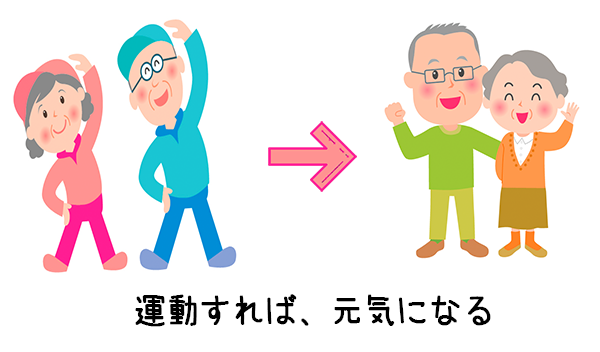

This verb form can show “if” statements. The conjugation for the conditional form follows the same rule for all verb types.
For the affirmative, change the dictionary form of the verb by dropping the final u-vowel and adding e. Then, add ば.
食べる → 食べれば
taberu → tabereba
すしを食べれば、元気になる。
Sushi o tabereba genki ni naru.
If you eat sushi, you get energy.
飲む → 飲めば
nomu → nomeba
お茶を飲めば、病気にならない。
Ocha o nomeba byouki ni naranai.
If you drink tea, you won’t get sick.
For the negative, take the negative informal present tense (nai-form), remove ない and add なければ.
食べない → 食べなければ
tabenai → tabenakereba
すしを食べなければ、元気が出ない。
Sushi o tabenakereba, genki ga denai.
If you don’t eat sushi, you won’t get energy.
飲まない → 飲まなければ
nomanai → nomanakereba
お茶を飲まなければ、病気になる。
Ocha o nomanakereba, byouki ni naru.
If you don’t drink tea, you’ll get sick.
宿題すれば、ゲームしていいよ。
Shukudai sureba, geemu shite iiyo.
If you do your homework, you can play video games.
会社に来れば教えてあげます。
Kaisha ni kureba, oshiete agemasu.
If you come to the company, I will teach you.
Causative
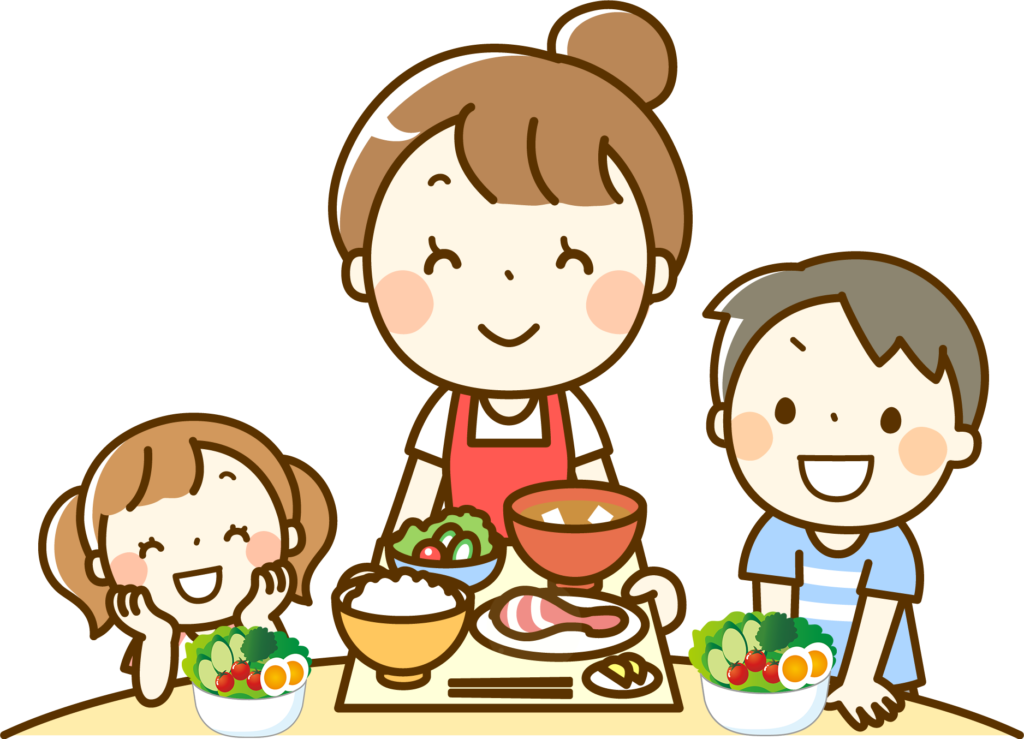

The causative form of the verb can mean “to make” or” let” someone or something do an action. It’s important to see the context to know exactly what the phrase is trying to convey.
For ru-verbs, drop the る and add させる to create the causative.
すしを食べる → すしを食べさせる
Sushi o taberu → Sushi o tabesaseru
I eat sushi → I make (them) eat sushi
For u-verbs take out the last vowel u and add aseru.
お茶を飲む → お茶を飲ませる
Ocha o nomu → Ocha o nomaseru
I drink tea → I make (them) drink tea
Another way is to take the negative form, remove ない and add せる.
お茶を飲まない → お茶を飲ませる
Ocha o nomanai → Ocha o nomaseru
I drink tea → I make (them) drink tea
The two irregular verbs are conjugated as follows:
する → させる
suru → saseru
くる → 来させる
kuru → kosaseru
To make the negative and polite forms of the causative you can treat the conjugated causative verbs as ru-verbs. Remove る and add ない (negative), ます(polite affirmative), or ません(polite negative)。
食べさせる → 食べさせない/食べさせます/食べさせません
tabesaseru → tabesasenai/tabesasemasu/tabesasemasen
飲ませる → 飲ませない/飲ませます/飲ませません
nomaseru → nomasenai/nomasemasu/nomasemasen
Parents often use this to talk about making their kids do things.
子どもに野菜もっと食べさせる。
Kodomo ni yasai motto tabesaseru.
I make my children eat more vegetables.
すいません、静かにさせます。
Suimasen, shizuka ni sasemasu.
I’m sorry, I’ll make them be quiet.
Causative Passive


The causative passive is a combination of causative and passive verbs. Although it may seem confusing, it just means “to be made” to do something. To form the causative passive take the causative form and then conjugate it as a ru-verb into passive form.
すしを食べさせる → すしを食べさせられる
Sushi o tabesaseru → Sushi o tabesaserareru
I make (them) eat sushi → I am made to eat sushi
お茶を飲ませる → お茶を飲ませられる
Ocha o nomaseru → Ocha o nomaserareru
I make (them) drink tea → I am made to drink tea
To form the negative and polite forms, conjugate as a ru-verb in the present tense, using the endings ない(negative), ます(polite affirmative), or ません (polite negative).
食べさせられる → 食べさせられない/食べさせられます/食べさせられません
tabesaserareru → tabesaserarenai/tabesaseraremasu/tabesaseraremasen
飲ませられる → 飲ませられない/飲ませられます/飲ませられませんnomaserareru → nomaserarenai/nomaseraremasu/nomaseraremasen
Here are some example sentences uses the causative passive form:
いつも先生に教室の掃除をさせられます。
Itsumo sensei ni kyoushitsu no souji o saseraremasu.
My teacher always makes me clean the classroom.
友達に秘密を言わさせられた。
Tomodachi ni himitsu o iwasaserareta.
My friend made me say a secret.
Imperative
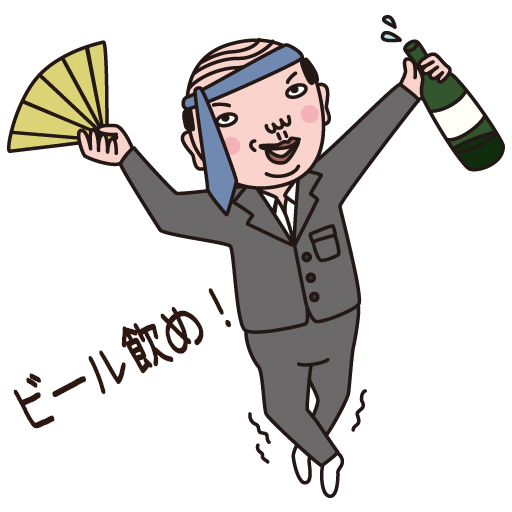

The command form in Japanese can be extremely rude and should never be used with someone who is of higher social hierarchy than you. However, it can be used to express anger or authority, and it can also be heard in anime and manga. In most cases, if you want to make a request, it’s better to use the te-form.
To create the imperative form for ru-verbs, drop the る and add ろ.
すしを食べる → すし食べろ!
Sushi o taberu → Sushi tabero!
I eat sushi → Eat sushi!
For u-verbs, change the last vowel to e.
お茶を飲む → お茶飲め!
Ocha o nomu → Ocha nome!
I drink tea → Drink tea!
The two irregular verbs conjugate as:
する → しろ
suru → shiro
くる → こい
kuru → koi
The negative imperative can be formed by adding a な to the dictionary form. This applies even to irregular verbs.
食べる → 食べるな!
Taberu → Taberuna!
to eat → Don’t eat!
飲む → 飲むな!
Nomu → Nomuna!
To drink → Don’t drink!
Conjugating further
Japanese verbs can be conjugated further and combined with different conjugations.
As seen earlier, the conditional passive is a great example of this. The conditional makes the verb function as a ru-verb so that it is simple to further conjugate it to passive.
As you study Japanese, you may notice more and more combined conjugations.
Here are some other examples of combining conjugations:
Potential form + past tense can be formed by taking the potential form and conjugating it to past tense as if it was a ru-verb.
すしが食べ(ら)れる →すしが 食べ(ら)れた
Sushi ga taberareru → Sushi ga taberareta
I can eat sushi → I could eat sushi
Passive + te-form can be formed by taking the passive form of the verb and conjugating it like a ru-verb in te-form.
食べられる → 食べられて
taberareru → taberarete
主人公が敵に食べられて死んだ。
Shujinkou ga teki ni taberarete shinda.
The main character was eaten by their enemy and died.
The causative passive can also further connect to the te-form. Here’s an example:
いつも宿題をやらさせられて辛い。
Itsumo shukudai o yarasaserarete tsurai.
It’s hard to always be made to do homework.
28 June 2020
What is te-form and When to Use It?
(This article was reviewed and edited by native Japanese speakers to ensure accuracy.)
The te-form can be an extremely useful and versatile grammar form. It is characterized by the ending て(te) or で(de).
What can be particularly confusing about this form is that there are many different uses and conjugation rules. It’s used for connecting different phrases and adjectives, showing a series of actions, and making requests. Hopefully, this article can clear up any confusion!
How to conjugate verbs to te-form
The first step to using te-form is to figure out how to form it. With verbs, you can either look at the past tense form or the dictionary form to determine its te-form. One important thing is that the te-form does not have any tense by itself. The tense is determined by the final verb that follows.
Conjugating using the past tense form
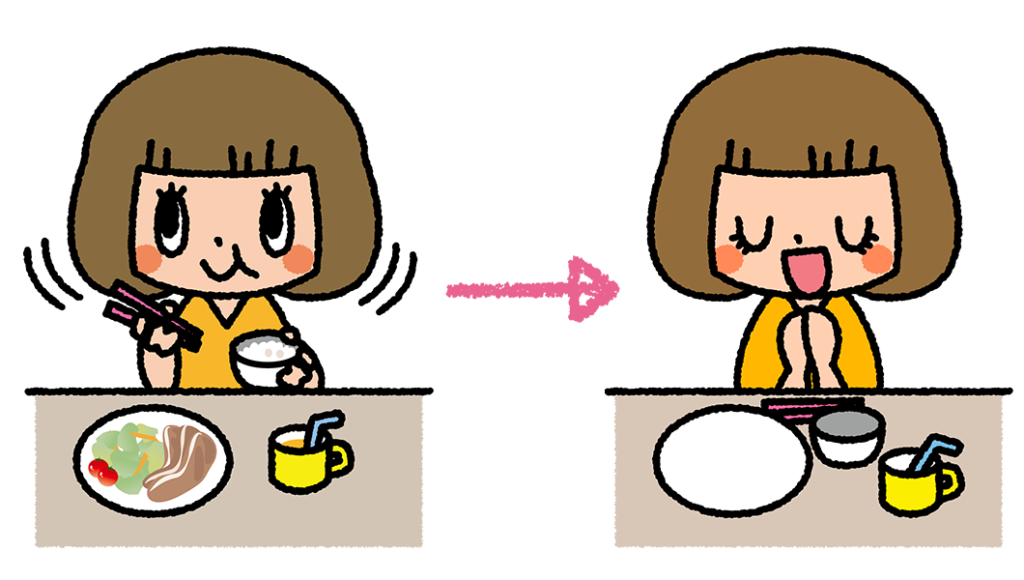

If you already know how to form the past tense, I’d recommend this method.
A verb ending of だ(da) in the past tense is replaced by で(de).
飲んだ → 飲んで
nonda → nonde
Verbs which end in た(ta) in the past tense changes to て(te).
食べた → 食べて
tabeta → tabete
Conjugating using the dictionary form


The more complex way to figure out the te-form is to use the dictionary form. Here’s how it works:
Ru-verbs or vowel stem verbs ending in る(ru) (also known as group 2 or ichidan verbs) will have the ending replaced by て(te). Not all ru-verbs follow this rule so it’s important to know the different verb groups.
食べる → 食べて
taberu → tabete
There are two irregular verbs ending in る(ru): する(suru), meaning “to do”, and くる(kuru), meaning “to come”. They are conjugated as follows.
する → して
suru → shite
来る → 来て
kuru → kite
U-verbs which end in う(u), つ(tsu), and る(ru), also known as group 1 or godan verbs, change to って(tte).
売る → 売って
uru → utte
買う → 買って
kau → katte
立つ → 立って
tatsu → tatte
Verbs ending in く(ku) and ぐ(gu) change to いて(ite) and いで(ide) respectively.
焼く → 焼いて
yaku → yaite
泳ぐ → 泳いで
oyogu → oyoide
Verbs ending in ぬ(nu), ぶ(bu), and む(mu) change to んで(nde).
死ぬ → 死んで
shinu → shinde
学ぶ → 学んで
manabu → manande
飲む → 飲んで
nomu → nonde
Verbs with an ending of す(su) change to して(shite).
話す → 話して
hanasu → hanashite
How to conjugate adjectives to te-form
Adjectives can also be conjugated to te-form based on whether they are a な(na) or い(i) adjective. Na-adjectives are those that use な when describing something.
Examples include きれいな(kireina), 有名な(yuumeina), 小さな(chiisana). I-adjectives are those that end in い like 面白い(omoshiroi), 美味しい(oishii), or 美しい(utsukushii).
Na-adjectives change to で(de) and i-adjectives will change to くて(kute) in the te-form.
きれいな → きれいで
kireina → kireide
面白い → 面白くて
omoshiroi → omoshirokute
Negative te-form adjectives and verbs
Adjectives
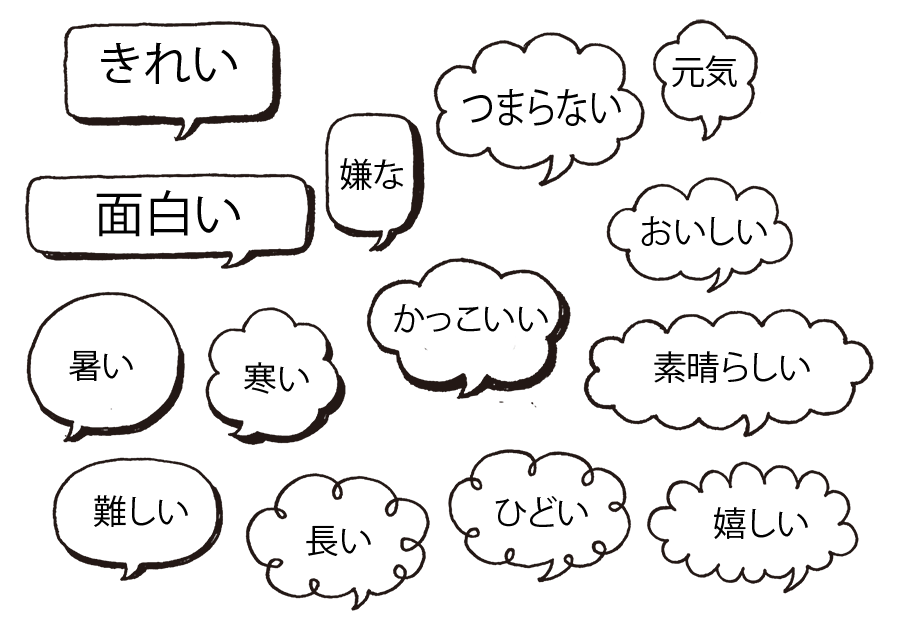

There is only one form of the negative te-form of an adjective. It’s formed by taking the negative form of the adjective, dropping the ending い(i) and replacing it with くて(kute). For example:
na-adjective
きれいじゃない → きれいじゃなくて
kirei janai → kirei janakute
きれいではない → きれいではなくて
Kirei dewanai → kirei dewanakute
i-adjective
面白くない → 面白くなくて
omoshirokunai → omoshirokunakute
Verbs
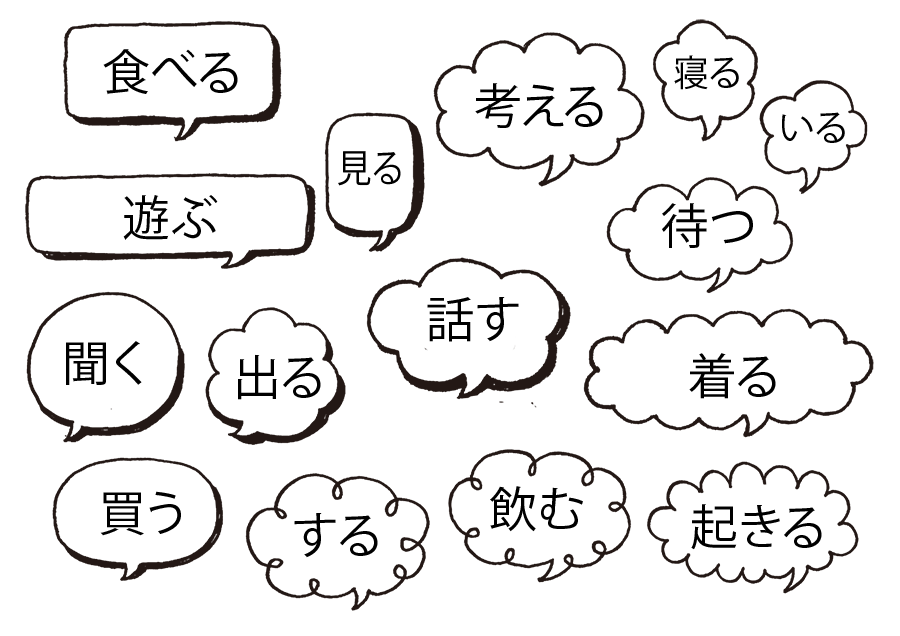

These can have two forms, で(de) or くて(kute) in the negative te-form. で is used in situations where the te-form verb is connecting to another verb in a sentence pattern, or when making requests. They are formed by simply adding で to the negative form of the verb.
Here’s an example of how to form it:
歩かない → 歩かないで
arukanai → arukanaide
Here are some situational examples:
Connecting to another verb
走らないで運動しよう!
Hashiranai de undou shiyou!
Let’s exercise without running!
Making requests
走らないで!
Hashiranaide!
Don’t run!
くて(kute) typically connects verbs to adjectives and often implies a cause and effect. They are formed by dropping the い from the negative form of the verb and adding くて.
走らない → 走らなくて
hashiranai → hashiranakute
Situational examples:
Verb connecting to adjective
走らなくていい。
Hashiranakute ii.
You don’t have to run.
Cause and effect
勉強しなくて、先生に怒られた。
Benkyou shinakute, sensei ni okorareta.
I didn’t study so I was scolded by my teacher.
Using te-form verbs to connect sentence patterns
One of the primary uses of verbs in te-form is to connect to different sentence patterns. After creating the te-form with one verb, it can further connect to another verb or adjective.
An important thing to keep in mind is that all of these phrase endings also have a negative form. However, the negative form affects the verb in te-form, and not the ending verb. Here are some common ones:
~ている (te iru) and ~ていない (te inai)
This connects a verb to いる(iru), meaning “to be”. The negative form is 〜ていない. In English it is similar to the “ing” form. It expresses something that is continuously happening.
今、お昼食べている。
Ima, ohiru tabete iru.
I’m eating lunch right now.
今、お昼食べていない。
Ima, ohiru tabete inai.
I’m not eating lunch right now.
When forming these sentences, the い after て is often dropped so it is smoother.
今、お昼食べてる。
Ima, ohiru tabeteru.
I’m eating lunch right now.
今、お昼食べてない。
Ima, ohiru tabetenai.
I’m not eating lunch right now.
~てみる (te miru) and 〜てみない (te minai)
These two sentence patterns mean something like “to try”. The negative form is 〜てみない and can in certain cases means something similar to the positive form. Here are two examples:
宝くじ買ってみる?
Takarakuji katte miru?
Do you want to try buying a lottery ticket?
宝くじ買ってみない?
Takarakuji katte minai?
Why don’t we try buying a lottery ticket?
~ていく (te iku) and 〜ていかない (te ikanai)
This connects to the verb, いく(iku), which means “to go” and its negative form is 〜ていかない . The te-form verb that precedes the sentence ending is something you will or will not do before going.
ご飯作っていくよ。
Gohan tsukutte ikuyo.
I’ll make food before I go.
ご飯作っていかない。
Gohan tsukutte ikanai.
I won’t make food before I go.
~てくる (te kuru) and 〜てこない (te konai)
These sentence patterns connect to the verb くる(kuru), which means “to come”. However, it doesn’t really mean “to come” in this context, but more like “going” or “not going”. It also implies that you’ll come back to the original place after completing the action.
外で運動してくる。
Soto de undou shite kuru.
I’m going to run outside.
外で運動してこない。
Soto de undou shite konai.
I’m not going to run outside
〜てある(te aru) and 〜てない(te nai) to exist
This connects the verb ある(aru), meaning “to exist”, to the any te-form verb. In these contexts it means something like “have” and “have not”. It’s used when something has or hasn’t been done already.
In the first example sentence, 〜てある implies that the ice cream is still there and hasn’t been eaten yet.
アイスクリーム買ってある。
Aisukuriimu katte aru.
I’ve bought ice cream.
アイスクリーム買ってない。
Aisukuriimu katte nai.
I haven’t bought ice cream.
~ていい(te ii)
This is a unique sentence ending because it connects to an adjective. いい(ii) comes from the adjective 良い (yoi or ii). It means “it’s ok”. The negative form of this sentence ending is not commonly used because it sounds awkward.
お菓子買っていい?
Okashi katte ii?
Is it ok to buy sweets?
The negative te-form of the verb will typically use くて(kute) because it’s connecting to an adjective. However, it can also work with で(de)
お金、返さなくていいです。
Okane, kaesanakute ii desu.
It’s ok not to return the money.
お金、返さないでいいです。
Okane, kaesanaide ii desu.
It’s ok not to return the money.
Describes a series of action
The te-form can also be used when describing events that are unfolding. It can be used like the word “then” in English. It might seem strange to add “then” to every phrase in the sentence, but in Japanese it’s necessary to put the te-form to link them all together.
It’s important that all events or actions be listed chronologically. Also, the final phrase of the sentence is what determines the tense of the whole sentence.
今日は会社行って、帰りに服買って、晩ごはん食べてくる。
Kyou wa kaisha itte, kaeri ni fuku katte, ban gohan tabete kuru.
Today I will go to work, then buy clothes on the way back, and then I am going to eat dinner.
昨日、買い物行って服買ってきた。
Kinou, kaimono itte fuku katte kita.
Yesterday, I went shopping and then bought clothes.
Making a request
This is another common use of the te-form. Although te-form often links phrases together, in these situations it comes at the end of the sentence.
The informal version of making a request, can be made using the te-form verb at the end of the sentence.
早く学校に来て!
Hayaku gakkou ni kite!
Come to school quickly!
やめてよ!
Yamete yo!
Stop it!
To make it formal, you can add ください (kudasai) at the end. However, it’s important to know that this can still sound demanding and strong.
早く学校に来てください!
Hayaku gakkou ni kite kudasai!
Please come to school quickly!
As a reminder, in the negative te-form of a verb, always use で (de).
こっち来ないで!
Kocchi konaide!
Don’t come here!
こっち来ないでください!
Kocchi konaide kudasai!
Please don’t come here!
触らないで!
Sawaranaide!
Don’t touch!
触らないでください!
Sawaranaide kudasai!
Please don’t touch!
In polite situations, you may want to ask for something in a softer way. You can use the verbs もらう(morau) or いただく(itadaku). Both verbs mean something like “to recieve”, but it’s like adding “could” or “would” in English.
明日学校に来てもらえませんか?
Ashita gakkou ni kite moraemasen ka?
Could you come to school tomorrow?
明日学校に来ていただけませんか?
Ashita gakkou ni kite itadakemasen ka?
Could you come to school tomorrow?
明日学校に来てもらえると嬉しいんですけど。
Ashita gakkou ni kite moraeruto ureshiin desu kedo.
It would be nice if you could come to school tomorrow.
明日学校に来ていただけると嬉しいんですけど。
Ashita gakkou ni kite itadakeruto ureshiin desu kedo.
It would be nice if you could come to school tomorrow.
Adjectives
Te-form adjectives are used to connect to both adjectives and verbs.
Adjectives connecting to verbs will usually have a cause and effect pattern. It is similar to “so” in English.
テスト、難しくて落ちた。
Tesuto, muzukashikute ochita.
The test was hard so I failed.
It can also link adjectives together, acting like the “and” in English. However, unlike “and” it needs to be used with every adjective until the last adjective.
夜は暗くて怖い。
Yoru wa kurakute kowai.
The night is dark and scary.
鈴木さんは背が高くて、頭が良くて、面白い人です。
Suzuki-san wa se ga takakute, atama ga yokute, omoshiroi hito desu.
Suzuki-san is a tall, smart, and interesting person.
Many Japanese learners can confuse と(to) which links together objects. In this case, make sure not to write: 夜は暗いと怖い (incorrect)
Advice for learning and using te-form
Since there are many uses and conjugations for te-form, it can be difficult to learn. It can be a good start to use the guidelines and rules, but eventually, it might be better to memorize conjugations separately from the rules. Another tip would be to observe the te-form in written text and when listening to Japanese. This could help you to be more intuitive when figuring out how to form the phrases themselves.
4 June 2020
Itadakimasu! A Guide to Japanese Meal Time Words and Phrases
(This article was reviewed and edited by native Japanese speakers to ensure accuracy.)
Meal times are an important part of Japanese culture. Wide varieties of food are everywhere, especially in big cities. Even on Japanese T.V., you might notice there are more shows and segments related to cooking and food than other countries. Anime and manga also often feature storylines like becoming a professional chef or patissiere.
Food and meals are such a central part of the culture, that there tends to be many different words and phrases compared to English.
Basic meal words


The following words all mean “meal” in Japanese. These words can be used at any time of day, and it doesn’t specify the timing of the meal. Since Japanese has varying levels of formality in the language, there are differences in the politeness levels of these words.
ごはん – Gohan
This word, also written ご飯, literally means “rice” but it can also mean “meal”. In Japanese cuisine, rice is considered as the 主食(Shushoku) or “staple food”. Back in the day, most people ate meals that consisted of rice, soup, and side dishes. This is why the same word for “rice” is used for the word “meal”.
ごはん, is mainly used in casual Japanese with friends and family. Here are a few sentences where ごはん is used as the word “meal”:
ごはん何がいい?
Gohan nani ga ii?
What do you want to eat?
今日、ごはん外で食べてくる。
Kyou, gohan soto de tabete kuru.
I’m going to eat out today.
Here are also some situations where ごはん is used for the word “rice”:
パンとごはん、どっちが好き?
Pan to gohan, docchi ga suki?
Do you prefer bread or rice?
ごはん炊けた?
Gohan taketa?
Is the rice cooked?
食事 – Shokuji
This word for “meal” has a more formal and respectful image. The two kanji means “eat” (食) and “things” (事). It’s commonly used in polite situations or when referring to a fancier sit-down meal.
今度、食事でもどう?
Kondo, shokuji demo dou?
How about going for a meal next time?
食事の仕度しなきゃ。
Shokuji no shitaku shinakya.
I have to prepare the meal.
When using 食事 it becomes more polite if you add お. This can be especially useful when talking to someone who is higher in social status or hierarchy.
これからお食事でもいかがですか?
Korekara oshokuji demo ikaga desu ka?
Would you like to go for a meal?
飯 (メシ) – Meshi
This word also comes from the word “rice” and means “meal”. It is a very informal way of speaking and it’s normally used by men. It has a masculine nuance and it’s best to use it with those who are of lower or equal social status.
飯にしない?
Meshi ni shinai?
Shall we eat?
Breakfast
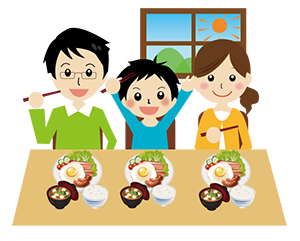

Similarly to the words for “meal”, the following words mean “breakfast” in various levels of formality. The word “morning”, 朝 (asa), is attached to each of the basic meal words to form the word “breakfast”.
朝ごはん – Asagohan
This word works similarly to the word ごはん except that it refers to breakfast. It is a casual way of saying breakfast.
朝ごはん食べる人?
Asagohan taberu hito?
Who wants breakfast?
朝食 – Choushoku
Like the word 食事, this is also a more formal way of saying breakfast. It’s often heard or used when eating out for breakfast, such as in hotels.
ホテルに朝食ついてる?
Hoteru ni choushoku tsuiteru?
Is there breakfast at the hotel?
朝食は一階になります。
Choushoku wa ikkai ni narimasu.
The breakfast is on the first floor.
朝飯 – Asameshi
This is the most informal version of the word “breakfast”. It is mostly used by men and functions like the word, 飯.
朝飯まだ?
Asameshi mada?
Is breakfast ready?
Lunch
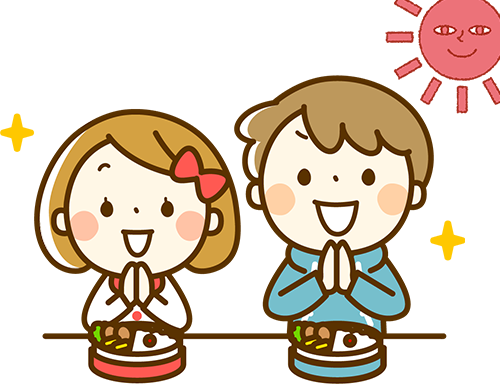

There are many different ways of saying “lunch” in Japanese. It’s reflected by the fact that people might be out of the house during lunchtime; work, school, or dining out. Adding the word 昼 (hiru), or noon, to the words for “meal” can turn them into “lunch”.
昼ごはん – Hirugohan
This word for “lunch” can be directly translated as “noon rice”. As explained earlier, the word rice, ごはん, has become synonymous with the meaning for “meal” in Japanese. 昼ごはん is the word used more commonly among friends and family.
昼ごはんもう食べた?
Hirugohan mou tabeta?
Did you eat lunch yet?
昼食 – Chuushoku
This is a polite and more formal way of saying “lunch”. It may be used by event coordinators, hotels, or other service industries.
三ツ星レストランでの昼食となります。
Mitsuboshi resutoran de no chuushoku to narimasu.
Lunch will be served at a three-star restaurant.
昼食は隣の部屋に用意しております。
Chuushoku wa tonari no heya ni youi shite orimasu.
Lunch will be served in the room next door.
昼飯 – Hirumeshi
Because of the word 飯, this is the most informal form of saying “lunch”. It’s used mainly by men when talking to someone of equal or lower social status.
今日の昼飯どうする?
Kyou no hirumeshi dousuru?
What should we have for today’s lunch?
お昼 – Ohiru
This is the most versatile way of saying “lunch”. It simply adds an お, as a polite form, to the word 昼, or noon. It can casually be used among friends and family.
そろそろお昼にしましょうか。
Sorosoro ohiru ni shimashou ka.
Shall we have lunch soon.
お母さん、お昼まだ?
Okaasan, ohiru mada?
Mom, is it lunch yet?
It can even work in certain polite situations. For example, it would be possible to say this to your boss:
お昼はどうされますか?
Ohiru wa dou saremasu ka?
What is your lunch plan?
However, in service industries towards customers or in big events, it’s important to know that the word “lunch” would not be お昼, but 昼食.
ランチ – Ranchi
This is a borrowed word from English. It’s simply “lunch” written in katakana. Japanese people feel that words from other languages are more hip or trendy. In the case of the word ランチ, women and girls might use this word to sound more stylish. Also, many cafes and restaurants will display this word to appear more attractive.
ランチ行かない?
Ranchi ikanai?
Do you want to go for lunch?
ランチはじめました。
Ranchi hajimemashita.
We started serving lunch.
お弁当 – Obento
This is a very important part of Japanese culture and refers to a “packaged lunch”.
お弁当 usually consists of rice and side dishes in a container. It has a long history and possibly originates from the 12th century. It is also said to come from the word “convenient” in Chinese.
These days, お弁当 not only comes in the form of rice and side dishes, but there are also packaged sandwiches or cute character お弁当 called キャラ弁 (kyaraben).
お弁当 are either made at home or bought outside in convenience stores or train stations.
美味しそうなお弁当だね。
Oishisou na obento da ne.
That packaged lunch looks delicious.
今日はお弁当いらない。
Kyou wa obento iranai.
I don’t need a packaged lunch today.
給食 – Kyuushoku
This means “school lunch” and is a combination of 給 (kyuu), meaning “to give out” and 食 (shoku), meaning “to eat”.
It is not simply a school lunch, but it consists of a balanced and fresh-cooked meal. The students help out with serving the meal. It also helps teach young students about nutrition and to be grateful for the food.
今日の給食何だった?
Kyou no kyuushoku nan datta?
What was today’s school lunch?
Snack/afternoon tea


おやつ – Oyatsu
This is one of the most casual and childish ways of saying “snack”. Parents will often use this word with their children. There is a phrase in Japanese called 三時のおやつ (Sanji no oyatsu), which means “three o’clock snack”. Japanese children often associate snack time being around 3pm.
今日のおやつ何?
Kyou no oyatsu nani?
What’s today’s snack?
おやつの時間が楽しみ!
Oyatsu no jikan ga tanoshimi!
I’m excited for snack time!
軽食 – Keishoku
This refers to a light meal or snack that might be given out at meetings, airplane flights, or when working over-time. It’s a word that is used in formal situations that signifies that the food will not be a meal but something like a snack.
軽食をご用意しております。
Keishoku o goyoui shite orimasu.
We have prepared a light meal.
お茶 – Ocha
In English, we might be used to saying “let’s grab a coffee” or “ do you want to go to a cafe?”. However, in Japanese, the culture of tea is so important that all of these might be expressed with the term お茶, meaning “tea”. It doesn’t necessarily mean only “tea” but it could be coffee, snacks, cake, tea, or other traditional sweets. You can use it to ask people to come for afternoon tea or going out to a cafe.
今度お茶しない?
Kondo ocha shinai?
Do you want to go for tea sometime?
Dinner
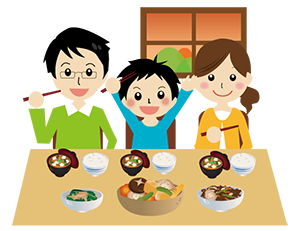

Similarly to the words for lunch, the words for dinner are also mostly compound words made of a meal word and the time it is eaten. However, there are more words for evening or night in Japanese like 夜, 晩, 夕 which can be confusing.
晩ごはん – Bangohan
This is another compound word with ごはん combined with 晩(ban) which means “night”. This refers to the time period after the sun sets when most people are still awake. It is used casually among friends and family.
晩ごはん何がいい?
Bangohan nani ga ii?
What do you want for dinner?
晩飯 – Banmeshi
This word replaces ごはん with 飯 which makes it much more informal than 晩ごはん. Like all 飯 words, it is mostly used by men.
晩飯食いに行こう。
Banmeshi kui ni ikou.
Let’s go eat dinner.
夕食 – Yuushoku
This word combines 夕(yuu) which means “evening” or the time that the sun is about to set, and 食(eat). Since it is a word with 食, it is a formal and polite form of saying “dinner”.
夕食はホテルになります。
Yuushoku wa hoteru ni narimasu.
Dinner will be at the hotel.
ディナー – Dinaa
Like the word ランチ, this word is also a borrowed English word. It simply means “dinner” and written in katakana. It gives off a trendy and western feel, so many posh restaurants will use this word. It can also be used when you want to talk about a nice sit-down dinner.
ディナーはご予約をおすすめします。
Dinaa wa goyoyaku o osusume shimasu.
Reservations are recommended for dinner.
夜ごはん – Yorugohan
This is a word that can also be interchangeable with 晩ごはん or 夕ごはん. 夜 in 夜ごはん technically means late-night, but in this context all of the dinner ごはん words are exchangeable. It’s important not to confuse it with 夜食 which means “late-night snack”.
夜ごはん何がいい?
Yorugohan nani ga ii?
What do you want for dinner?
夕ごはん – Yuugohan
This word uses 夕 in front of ごはん, and would technically refer to an early dinner when the sun is setting. However, it can basically be used interchangably 晩ごはん or 夜ごはん.
夕ごはん何がいい?
Yuugohan nani ga ii?
What do you want for dinner?
夜食 – Yashoku
This word refers to a small late-night meal or snack and it would not be considered dinner. It would be used in situations when you stay up late enough to get hungry again. The difference between 夕食 and 夜食 is that the kanji, 夜(yoru), refers to the time of day when people are asleep.
夜食にカップ麺食べた。
Yashoku ni kappumen tabeta.
I ate cup noodles for my late-night snack.
Meal time verbs:
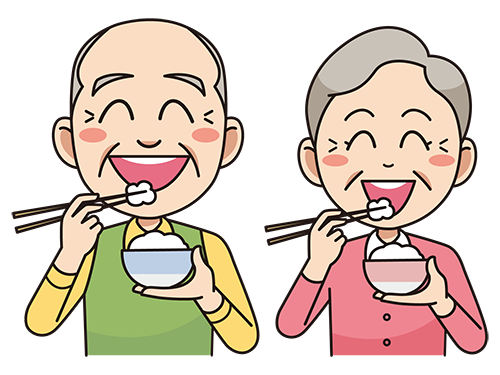

There are many verbs that are related to meal times, and some may not be as intuitive from an English-speaking perspective. It can be tricky because they can change their meaning when used in different contexts.
食べる – Taberu
One of the most straightforward verbs, this simply means “to eat”.
何食べる?
Nani taberu?
What do you want to eat?
まだ食べてないの?
Mada tabete naino?
Have you eaten yet?
It’s important to note that the words ごはん, 朝ごはん, 昼ごはん, and 夜ごはん will usually pair with 食べる, when referring to eating these meals.
もう朝ごはん食べた?
Mou asagohan tabeta?
Have you already eaten breakfast?
食べる can also sometimes be used as 食う (Kuu), which is the form that would most likely go with the words 飯, 朝飯, 昼飯, 晩飯. It is a very informal way of saying “to eat”, that men may use.
もう夕飯食ったよ。
Mou yuumeshi kutta yo.
I already ate dinner.
取る – Toru
This verb means “to take”. In a meal time context, it is a more polite way of saying “to eat” or “to have” a meal. It usually accompanies the words 食事、朝食、昼食、or any meal word with 食. Because this is more formal, it would be weird to use it with words like ごはん or 飯.
行く前に軽く昼食とろうか。
Iku mae ni karuku chuushoku torouka?
Shall we have a light lunch before we go?
残す – Nokosu
In Japanese culture, it can be considered rude to leave food on your plate.
This verb, which means “to leave”, can be used to talk about leaving food. It’s something that parents and teachers often tell children.
残さないで食べましょう。
Nokosanai de tabe mashou.
Let’s eat without leaving food.
出る – Deru
This verb means to “put out” or “go out”, but means “to serve” in a meal time context. You can use this verb to talk about food that you will serve someone or food that was served to you.
昼食はラーメンが出た。
Chuushoku wa raamen ga deta.
Ramen was served for lunch.
盛る – Moru
This can be an interesting verb because it also means “to serve”, “to plate”, or “to pile something”. It’s used when talking about foods that can be “piled” onto a plate or bowl.
どれくらいごはん盛ればいい?
Dorekurai gohan moreba ii?
How much rice should I serve?
It’s especially useful when asking for larger portions of rice or other dishes. The large portion would be called 大盛り(oomori) and can be an option in some restaurants and eateries.
ごはん大盛りでお願いします。
Gohan oomori de onegaishimasu.
I would like a large portion of rice, please.
飲む – Nomu
This is the verb “to drink”. It can be used similarly to how we use the word “drink” in English. The same verb can be used for drinking alcohol or going to a bar.
何飲む?
Nani nomu?
What do you want to drink?
今日、飲みに行かない?
Kyou, nomi ni ikanai?
Do you want to go for a drink today?
Other mealtime phrases and words


いただきます – Itadakimasu
This is a phrase that is used before eating a meal. It can show appreciation for the food and the person who made it. It’s common to put your hands together and say いただきます.
The phrase itself comes from いただく, which is a polite way to say “to take” or “to have”. It means something like “I will take/have this food” and can be comparable to “bon appétit” or “let’s eat”.
It’s common for Japanese people to say it before every meal, especially when they’re eating with other people. If you are invited, you should most definitely say this before eating.
今日のお昼美味しそう。いただきます!
Kyou no ohiru oishisou. Itadakimasu!
Today’s lunch looks delicious. Bon appétit!
めしあがれ – Meshiagare
The person who made the food might say めしあがれ and means something like “please eat”.
It’s usually a response to the phrase いただきます. It’s important to keep in mind that this phrase is usually directed to people of equal or lower social hierarchy. For example, adults might say this to children.
This phrase is much less common compared to いただきます in real life.
どうぞ、めしあがれ。
Douzo, meshiagare.
Go ahead, please eat.
ごちそうさまでした – Gochisousama deshita
After finishing the meal, it is polite to say ごちそうさまでした. ごちそう means a “delicious meal” or “feast”. The whole phrase means “it was a delicious meal” or “thank you for the meal”. It shows gratitude and appreciation to use this phrase.
If you are invited, it will be a polite thing to say when you finish eating. You can also say this when you leave.
ごちそうさまでした。とっても美味しかったです!
Gochisousama deshita. Tottemo oishikatta desu!
Thank you for the meal. It was very delicious!
お腹が空きました – Onaka ga sukimashita
In Japanese, the phrase for “being hungry” is お腹が空きました. It literally translates to “my stomach is empty”.
ランニングをしたらお腹が空きました。
Ranningu o shitara onaka ga sukimashita.
After running, I feel hungry.
あー、めっちゃお腹空いた。
Aa, meccha onaka suita.
Ah, I’m really hungry.
腹が減る – Hara ga heru
This is the informal version of お腹がすきました. In this phrase, it uses the verb 減る(heru) which means ”to decrease”. This way of speech is used mostly by men. It should also only be used with those of equal or lower social status than you.
腹減ったんだけど、ご飯まだ?
Hara hettandakedo, gohan mada?
I’m hungry, is the food ready?
お腹がいっぱいです – Onaka ga ippaidesu
This phrase also uses the stomach as the one determining the level of hunger. The phrase literally means “my stomach is full”. In Japanese, when referring to levels of hunger, you always have to talk about your stomach.
もう結構です。お腹がいっぱいです。
Mou kekkou desu. Onaka ga ippai desu.
It’s alright. I’m full.
もうお腹いっぱいだよ。
Mou onaka ippai da yo.
I’m already full.
腹いっぱい – Hara ippai
This is the informal version of お腹がいっぱいです. It’s mainly used by men and should only be used with those of equal or lower social status.
あー、すし腹いっぱい食いてー。
Aa, sushi hara ippai kuitee.
Ah, I want to eat sushi till I’m full.
おかわり – Okawari
This is the word for “seconds”, when you might want to get another helping of food. In Japanese, the concept of getting seconds might be more common than in the English speaking countries because of the tradition of eating rice and many side dishes. To balance out the salty flavors of the side dishes, it’s common to ask for a second helping.
ごはん、おかわり出来ますか?
Gohan, okawari dekimasuka?
Is it possible to have another helping of rice?
おかわり自由です。
Okawari jiyuu desu.
Free refills.
自炊 – Jisui
This is a word that means “to cook at home”. It comes from the kanji 自(yourself) and 炊(to cook). The kanji 炊, means “cook” but refers more to making rice.
This word represents the traditional Japanese eating style which assumed that if you are at home you would mainly eat rice and side dishes. Nowadays, it simply means that you cook at home and live alone.
いつも自炊してます。
Itsumo jisui shitemasu.
I always eat and cook by myself.
22 May 2020
Japanese Insults 101
(This article was reviewed and edited by native Japanese speakers to ensure accuracy.)
Insults can be one of the fun and interesting aspects of language learning. Once you begin to understand how insults work in a language it can also feel like you’re getting to know the culture and the people.
It should be no surprise that as Japanese is a relatively polite language, its insults are also a reflection of the culture. From the standards of other languages, Japanese insults are often much milder. Breaking social conventions is more important than the exact words that are used. Not using respectful language when you are supposed to, can be very insulting in Japan.
Basic Insult Words:


These are some basic words that may be used as insults.
One thing to keep in mind is that many of these words are considered childish, and are not taken too seriously in some situations. You may hear adults saying these words if they are in a serious fight.
That being said, it could be considered rude to use them so it’s best to be careful!
バカ (also 馬鹿) – Baka
This is one of the most basic insults and means “stupid”. It can be used for people and situations.
There are many uses and can range in meaning from a sign of concern, an angry insult, or a childish way to taunt someone.
When using towards a person, you can simply call the other person バカ. It’s also common to end the sentence with it.
割り込むなよ、バカ!
Warikomuna yo, baka!
Don’t cut in front, stupid!
よそ見してんじゃねえよ、バカ!
Yosomi shite n janee yo, baka!
Pay attention, stupid!
However, there are also a few ways to say it towards someone in a light-hearted way or with a sign of care.
If someone close to you talks about something they did that was a bit dumb, it’s possible to say the following phrases. In order to keep things fairly light-hearted, the other person must be of a lower status (ex. parent to child), younger or very close. It’s also important to keep the tone calm and not aggressive or angry.
バカじゃないの?
Baka ja nai no?
Are you stupid?
バカだな。
Baka da na.
You must be stupid.
Among children, this way of saying バカ might be common if they get in a small fight with each other:
けんたのバカ!
Kenta no baka!
Stupid Kenta!
The following two phrases with バカ can be used situationally. In a stupid situation you can talk about it with these phrases:
吹替版のアニメなんて馬鹿らしい。
Fukikaeban no anime nante bakarashii.
The dubbed version of the anime is so stupid.
そんなバカバカしいアニメまだ見てるの?
Sonna bakabakashii anime mada miteru no?
You’re still watching that stupid anime?
It’s also possible to comment on yourself, if you did something stupid. Here are a few ways:
私、バカみたい。
Watashi, baka mitai.
I feel stupid.
バカやっちゃった。
Baka yacchatta.
Oops, I did something stupid.
When actually angry and as an actual insult, バカ can also be used. However, it is mostly about the tone of the person saying it that would make the insult stronger.
バカ!
Baka!
Stupid!
The following two ways of saying バカ are probably more common in anime.
バカやろう!
Baka yarou!
You dummy!
バカもん!
Baka mon!
You dummy!
Another common バカ phrase that may appear in a certain anime is:


あんたバカ?
Anta baka?
Are you stupid?
Finally, there are a few other ways in which バカ can be used outside of simply meaning “stupid”.
バカにできない
Baka ni dekinai
It can’t be underestimated
親バカ
Oya baka
A parent who is stupidly overprotective of their child.
アホ – Aho
This word also means “stupid” and is more commonly used in the Kansai area, to replace バカ. It is basically the same as バカ but with a slightly softer nuance.
アホやな。
Aho yana.
That’s/You’re stupid.
アホくさ。
Aho kusa.
That’s stupid.
アホちゃう?
Aho chau?
Isn’t that/Are you stupid?
It’s also possible to simply call people アホ. Like バカ, it often appears at the ends of sentences.
割り込むなよ、アホ!
Warikomuna yo, aho!
Don’t cut in front, stupid!
よそ見してんじゃねえよ、アホ!
Yosomi shitenjanee yo, aho!
Pay attention, stupid!
クズ- Kuzu and カス- Kasu
These two words mean something like “worthless” and can be used toward another person to degrade them. It implies that the other person is less than human, garbage, or not worthy of respect.
クズやろう!
Kuzu yarou!
You piece of garbage!
このカス!
Kono kasu!
You scum!
くそ – Kuso
This is probably the closest insult that means “shit” in Japanese. However, it’s not as strong as the word “shit”. It can be used towards someone or when expressing disappointment.
くそ!負けた!
Kuso! Maketa!
Shit! I lost!
くそやろう!
Kuso yarou!
Piece of shit!
コラ – Kora
コラ is an interjection like “hey!” and has no specific meaning. It’s usually used to scold someone, as a way to call someone out, or when someone has wronged you.
It is not actually an insult, but it frequently appears together with insulting phrases. This can be added to the beginning or ends of phrases.
コラ!勝手に触るな!
Kora! Katte ni sawaruna!
Hey! Don’t you dare touch that!
何見てんじゃ、コラ!
Nani mitenja, kora!
Hey! What’re you looking at?
ふざけんなよ、コラ!
Fuzakenna yo, kora!
Hey! Don’t play around with me.
Annoyance Insults:
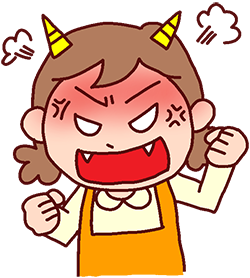

The following words can be used to express annoyance towards another person. It’s more common to hear these said by younger people. For example, an angsty teenager towards their parents might say some of these.
うるせぇ- Urusee
うるせぇ comes from うるさい which means “noisy”. However, when used in an angrier context it can turn into more of an insult like “shut up”.
うるせぇ!
Urusee!
Shut up!
うるせーなー!
Urusee naa!
Shut up (you are too noisy)!
お前ら、うるせぇぞ!
Omaera, urusee zo!
You guys, shut up!
うっせーんだよ!
Ussee n da yo!
Shut up! (this is more insisting)
だまれ – Damare
This is the command form of だまる, which means “to shut up”. It is probably the closest word to “shut up” in the English context.
だまれ!
Damare!
Shut up!
お前ら、ちょっとだまれよ。
Omaera, chotto damare yo.
You guys, shut up!
だまれ、バカ!
Damare, baka!
Shut up, stupid!
キモい – Kimoi
キモい comes from the shortened form of 気持ち悪い、which means “to feel sick” or “disgusting”. When used towards another person, it means you think the other person is gross, disgusting, or creepy.
お前、キモいんだけど。
Omae, kimoi n dakedo.
You’re gross.
あのおやじキモくない?
Ano oyaji kimokunai?
Isn’t that man creepy?
うざい – Uzai
This word is also a shortened form of a word, うざったい. It means “annoying” or “bothersome” and can be used towards other people.
お前うざいから消えろ。
Omae uzai kara kiero.
You’re annoying, go away.
あのジジイうざくね?
Ano jijii uzakune?
Isn’t that old man annoying?
Appearance Insults:


Just as in English, there are words that can be insulting based on appearance. Keep in mind that some of these words could be highly offensive and discriminatory if said to the wrong person.
ちび – Chibi – “Shorty”
だまれ、ちび!
Damare, chibi!
Shut up, shorty!
はげ- Hage – “Baldy”
うるさいんだよ、はげ!
Urusai n da yo, hage!
Shut up, baldy!
ブス- Busu – “Ugly”
キモいんだよ、ブス!
Kimoi n da yo, busu!
You’re gross, ugly!
デブ – Debu – “Fatty”
調子のってんじゃねーよ、デブ!
Choushi notte n janee yo, debu!
Don’t get cocky, fatty!
ババー – Babaa and ジジー – Jijii
These are the rude versions of the word for grandma and grandpa. Normally, we would say おばあさん (obaasan) おばあちゃん (obaachan), おじいさん (ojiisan), おじいちゃん (ojiichan). Even if the other person is not that old, it can be an insulting way to call someone.
ジジー、おせーよ!
Jijii, osee yo!
You old man, you’re so slow!
金返せよ、ババー!
Kane kaese yo, babaa!
Give me back the money, you old woman!
Appearance Insults towards yourself:
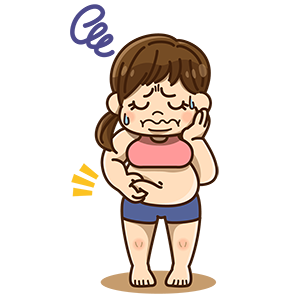

These insults are also sometimes used when talking about yourself to describe your own appearance.
デブになりたくないけどケーキ食べたい。
Debu ni naritakunai kedo keeki tabetai.
I don’t want to be a fatty, but I want to eat cake.
どうしよう、最近はげてきた。
Doushiyou, saikin hagetekita.
Oh no, I’m recently losing hair.
俺、ちびだけどバレーしたいんだ。
Ore, chibi dakedo baree shitai n da.
I’m short but I want to do volleyball.
Internet Insults
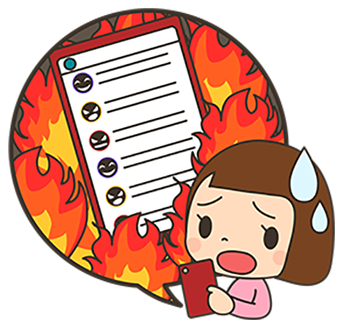

With the rise of social media, there are also insults that have popped up online. Keep a look out for some of these next time you’re reading some Japanese comment boards!
基地外 – Kichigai
Sometimes shortened to 基地 (kichi), it is a play on words and stands for 気違い(kichigai) which means a “crazy person”. To be more playful on the internet, they use a different kanji and the literal meaning of these kanji is “outside the fort”.
日本語でおk- Nihongo de ok
This can be used as an insult towards someone that makes no sense. It means “please use Japanese” as it can’t be understood. The reason why there is a “k” instead of hiragana is because when typing out “ok” in Japanese, the k remains in the Latin alphabet.
にわか – Niwaka
This is very common on the internet, especially in the anime community, and means something like “noob” or “newbie.” It’s used towards someone that doesn’t know much but suddenly appears to be knowledgeable about something.
For example, にわかファン (Niwaka fan) is a fan that became one recently and was not a die-hard fan from the beginning.
厨房 – Chuubou
This means 中坊 or “middle school boy” but it is using the kanji letters that mean “kitchen” to be playful. It is used towards someone who is immature.
DQN – Dokyun
This stands for “dokyun” and means someone that is unintellectual and has no common sense. It first appeared in a TV show title between 1994- 2002 目撃!ドキュン (Mokugeki Dokyun).
BBA/GGI – Babaa/Jijii
These two abbreviations appear frequently in social media. BBA stands for ババー and GGI stands for ジジー. As explained previously regarding ババー and ジジー it can be a rude and insulting way to call someone a grandpa or grandma regardless of age.
“You” as an Insult
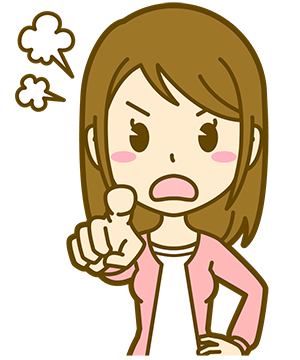

Besides insult words that might describe someone, it can also be insulting to change the word “you” into something more informal and rude. By using these words, it can change the hierarchy of the speech so that the other person is of lower status. Here are several ways in which “you” can be said in an offensive way:
あんた – Anta
This word comes from a variation of あなた and it is not inherently rude. However, it is definitely an informal way of speech which should only be used towards someone equal or lower in status than you. In that sense, when used out of this context it immediately becomes insulting.
あんた分かってんの?
Anta wakatten no?
Do you not understand?
おまえ – Omae
おまえ can also be tricky because in some situations it is not insulting. It’s usually used with people who might be close friends or where the other person is of a lower status. At the same time, it inherently sounds rough and masculine, so not everybody uses this word. It can be rude even with close friends.
In English, it might be like the word “bro” or “dude”. However, outside of established social norms, it can easily come across as talking down to someone.
何してんの、おまえ?
Nani shite n no, omae?
What are you doing?
てめえ – Temee
Compared to the other two words, this one is the rudest and insulting way of saying “you”. That being said, it’s usually used quite frequently in anime. That’s because anime can be an exaggerated version of real life. In everyday situations, てめえ would likely be heard only in very heated and angry circumstances.
Unlike おまえ, people don’t usually use てめえ unless they want to sound insulting.
てめえが悪いんだよ!
Temee ga waruinda yo!
You’re the one that’s wrong!
やろう – Yarou
This word does not entirely mean “you” but is often used with other offensive words towards a person to mean something like “bastard”. When used as a “you” it can be used with この or “this”.
このやろう!
Kono yarou!
You bastard!
It can also be used to talk about someone that annoyed you. In that case, it would attach with あの or “that”.
あのやろう、逃げやがった。
Ano yarou, nige yagatta.
That bastard ran away.
Phrases
In addition to the various words that can be insulting, the following are some common phrases that might be heard during a fight.
ふざけんなよ。
Fuzakenna yo.
Don’t play around with me.
調子にのってんじゃねえぞ。
Choushi ni notten n ja nee zo.
Don’t get cocky.
しばくぞ、コラ。
Shibaku zo, kora.
Hey! I’m gonna hit you.
死ね。
Shine.
Die.
頭おかしいんじゃないの?
Atama okashii n janai no?
Are you crazy?
Other Aspects of Japanese Insults


In general, you might notice that the insult words and phrases don’t have as strong of a meaning as insults in English. For this reason, there are actually more ways that the Japanese language can become rude or insulting, aside from the specific insults.
Breaking Social Conventions
Social conventions are an important part of Japanese culture. There are unsaid rules that people follow relating to hierarchy and social status.
From a young age, Japanese people are taught to respect elders, those who are of higher status in their social/work/school circles, among others. In all of these interactions, there are varying degrees of politeness, which are reflected even in the grammar.
Here is a glimpse into how Japanese social conventions work:
Assuming you are working for a traditional, large Japanese company, if you were talking to the CEO of your company, you would need to be extremely polite by using the appropriate honorific titles and forms of speech. However, if you were talking to a co-worker who joined the company one year before you, it’s important to be polite but not to the extent of talking to the CEO.
How does that relate to insults?
Because most people follow these rules, it is shocking and considered rude if broken. For example, if you’re in your twenties and called a middle-aged man on the street ジジー (rude way to say grandpa) it would be an insult.
In a normal situation, the middle-aged man is of higher status because they are a stranger and older than you.
No Keigo
When being insulting, keigo or the polite form of grammar, is often dropped. This goes with breaking social conventions.
Among adults, talking to strangers who are not considerably younger than you without using keigo can already be insulting in many situations.
Similarly to how there is a polite form, there is also a ruder form of talking. This kind of speech would use only informal language, and possibly command form verbs like 死ね (die), だまれ (shut-up), 言え (say), 来い (come).
Calling people without honorifics
With the dropping of keigo, it can also be insulting to use no honorifics such as さん (san).
In Japanese society, it is not uncommon to at least use some form of honorific even with close friends. Although in some cases, it’s completely acceptable to call somebody without honorifics.
By dropping honorifics completely, it can be very rude and insulting as it also puts the other person at a lower status than you. Also, the insulting words for “you” can be used like おまえ or てめえ instead of the person’s name.
Not common to use insulting language
In English, it might be more accepted to use some insulting words as part of daily life to express yourself.
However, in Japanese, it is not usual to use that much insulting language. This is partly because breaking social conventions can already be quite offensive. The way you speak often matters more than the exact words you use. It can sound over-the-top or comical if insults are not used in the right context.
As many of these insults and phrases are commonly used by anime characters, it’s important to understand that anime can be an exaggerated version of reality. Be careful about actually using any of these insulting words or phrases and it’s best to observe how native speakers are using them first.
10 May 2020
All About Japanese Honorifics
(This article was reviewed and edited by native Japanese speakers to ensure accuracy.)
Honorifics represent the essence of Japanese societal structure. Getting a handle on how to navigate honorifics can not only make you a better Japanese speaker, but it will allow you to participate in the culture and society.
First, let’s dive into what honorifics mean in English:


Honorifics are titles that define a person to show their “status” and in English, it comes before a name. It could be titles such as Ms., Mrs., Mr., or Dr. In the case of royalty it could be “prince”, or in politics, it could be “president” or “senator”.
Although it’s also quite common in English, it’s not as prevalently used and complex as in the Japanese language. It’s increasingly common in everyday life to just refer to each other by first names.
So how does this work in Japanese?
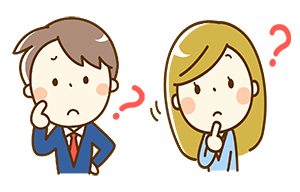

In the Japanese language, honorifics appear at the ends of names and are used in a very conscious way.
Everyone can choose the level of politeness when speaking. Since many words and phrases have polite and informal forms, it makes sense that the honorific also plays a crucial role in showing politeness.
When not to use honorifics:


Before discussing the types of honorifics, it’s just as important to know when not to use honorifics. There is even a word called 呼び捨て(yobi sute) to mean no-honorifics. It can literally be translated as “to call and throw out”.
Generally, when using no-honorifics, it means that the other person is of equal or lower status than you. In Japanese, “status” can be determined by age and credentials. The exceptions are if the other person is extremely close, has given you permission to use no-honorifics, or is a family member.
Same age friends and classmates might call each other without honorifics. It is particularly common for men to use last names in these situations.
佐藤、今日暇?
Satou, kyou hima?
Satou, you free today?
Parents talking to their kids, family members who share last names, and small children talking among each other will often use no-honorifics with the first name.
カズマ、宿題やった?
Kazuma, shukudai yatta?
Kazuma, did you do your homework?
Teachers have the choice not to use honorifics to their students. Usually, it will be their last name without honorifics. (But teachers many also use honorifics. It’s their choice.)
佐藤、宿題やった?
Satou, shukudai yatta?
Satou, did you do your homework?
Another common situation is with sports coaches talking to members of their team. Usually, it will be without honorifics and called by their last name.
高橋、ボールをもっと高くキックしないとダメだ!
Takahashi, boru o motto takaku kikku shinaito dame da!
Takahashi, you have to kick the ball higher!
When talking to people from other companies, you should not use honorifics when referring to members of your own company. This applies even in situations where they are your boss.
This is because your boss is not the other company’s boss. In a sense, you must talk about yourself and your company as a lower “status” to show respect to the other company.
申し訳ございません。佐藤は今、席を外しております。(Satou is your boss.)
Moushiwake gozaimasen. Satou wa ima, seki o hazushiteorimasu.
I’m very sorry. Satou is away at the moment.
However, make sure to use honorifics when actually talking to your boss. In this case, 佐藤部長 (Sato buchou) if his title is 部長 (department head).
Types of honorifics
ちゃん – Chan


This is an endearing honorific that is used with children and friends. It is used with someone who is of equal or lower status.
It is generally perceived as a female honorific and has a kawaii, or cute, connotation. Depending on the context or situation, it can also apply to all ages and genders. This can sometimes make it difficult to understand the various uses.
It’s common to use this honorific when adults are talking to a child (normally girls) or among children. Parents might also use it with their children.
リナちゃん今日幼稚園どうだった?
Rina-chan kyou youchien dou datta?
Rina, how was preschool today?
Towards a close female friend or romantic partner, it’s also possible to use ちゃん.
サキちゃん、カフェ行かない?
Saki-chan, kafe ikanai?
Saki, do you want to go to a cafe?
This honorific also often combines with word stems that mean grandma, grandpa, uncle, etc… to show more endearment towards them. It’s similar to how in English we might say granny, gramps, auntie to be more affectionate.
おばあちゃん, おじいちゃん
Obaachan, Ojiichan
Grandma, Grandpa
おばちゃん、おじちゃん
Obachan, Ojichan
Aunt, Uncle
お姉ちゃん、お兄ちゃん
Oneechan, Oniichan
Sister, Brother
Also keep in mind that in Japanese culture, it’s possible to call a non-family member brother, uncle, aunt, etc… if you feel close enough. For example, you might call the middle-aged women from the corner store that you see almost everyday おばちゃん or auntie.
Situations when using ちゃん with a male might be if the other person is a close friend, family, romantic partner, or sometimes a child who is a boy. In these situations, it acts more like a nickname and the first name is often shortened to two syllables.
昨日カズちゃん勉強した?
Kinou Kazu chan benkyou shita?
Did you study yesterday?
くん – Kun


This is basically like ちゃん, but is perceived as a male honorific. It can be used informally towards those who are lower or equal in status, age, and qualifications. It adds more friendliness and familiarity to a name.
It’s often used when an adult or another child is talking to a boy. Parents might also use it with their children.
カズマくん宿題やった?
Kazuma kun shukudai yatta?
Kazuma did you do your homework?
With male friends, classmates, and romantic partners, it’s also common to use くん.
Among classmates, the last name is frequently used with くん. Keep in mind that there are many choices when it comes to the honorifics and it depends on your preference and the social group that you belong to.
佐藤くん、今度映画行かない?
Satou kun, kondo eiga ikanai?
Satou kun, do you want to go to the movies next time?
In business contexts, although a bit old-fashioned, it can be used towards subordinates using their last name. In these situations, it can also apply to women.
佐藤くん、プレゼンの準備できた?
Sato kun, purezen no junbi dekita?
Sato, did you finish preparing the presentation?
さん – San


This is one of the most frequent honorifics and a safe choice for most occasions. It’s polite and formal, but also friendly. It can be used with friends, as well as those who you’re not familiar with.
さん typically implies that you perceive the other person as being of a higher status, but it’s perfectly normal to use it with people of equal or lower statuses.
Especially when talking with strangers, it is a good idea to call them by their last name with さん to be more polite.
For example, if you’re calling someone you have never met on the phone (Mr. Tanaka) you might say:
もしもし、田中さんのお宅でしょうか?
Moshimoshi, Tanaka san no otaku deshou ka?
Hello, is this Mr. Tanaka’s residence?
Some people in some situations put さん with acquaintances, older friends, and even close friends. Once a relationship is established and you find out more about the other person, it might be possible to use more informal honorifics. This works with both first and last names.
Using さん is common with adults, but kids usually don’t use it.
よしこさん、ランチ行きませんか?
Yoshiko san, ranchi ikimasen ka?
Yoshiko, would you like to go for lunch?
Similarly to ちゃん, it’s possible to connect さん with word stems that mean mother, father, brother, etc. Compared to ちゃん it is slightly more polite to use these words.
おばあさん、おじいさん
Obaasan, Ojiisan
Grandma, Grandpa
お姉さん、お兄さん
Oneesan, Oniisan
Sister, Brother
お母さん、お父さん
Okaasan, Otousan
Mother, Father
おばさん、おじさん
Obasan, Ojisan
Aunt, Uncle
様-Sama


様 is an honorific frequently used in situations relating to business and customer service. It is very polite and shows great respect to the other person. It is a way to address someone so that they are at a higher status level than you.
様 is more polite than さん.
Here are a few examples:
Salespeople often use this honorific towards customers.
失礼ですが、佐藤様はご結婚されていらっしゃいますか?
Shitsurei desu ga, Satou sama wa gokekkon sarete irasshaimasu ka?
Mr. Sato, I’m sorry to ask but are you married?
It’s often used in business phone conversations.
佐藤様いらっしゃいますでしょうか?
Satou sama irasshaimasu deshouka?
Is Mr. Sato available?
It’s also a way to address people in business emails.
株式会社カラー、庵野様
Kabushiki gaisha karaa, Anno sama
Mr. Anno of Color Corporation
先生 – Sensei


This honorific literally means teacher. In English, we tend to call teachers by Mr., Mrs., Ms., Dr., or Professor. In Japanese, the word for teacher is used as the honorific.
佐藤先生、宿題忘れました。
Satou sensei, shukudai wasuremashita.
Mr. Sato, I forgot my homework.
Besides teachers, 先生 can also be used for doctors, writers, and politicians.
村上先生、次の作品のテーマは何ですか?
Murakami sensei, tsugi no sakuhin no teema wa nandesu ka?
Mr. Murakami, what is the theme of your next work?
This honorific can also be used by itself to replace a name.
先生、足が痛いんですけど。
Sensei, ashi ga itai n desu kedo.
Doctor, my leg is hurting.
先輩 – Senpai (後輩 – Kouhai)
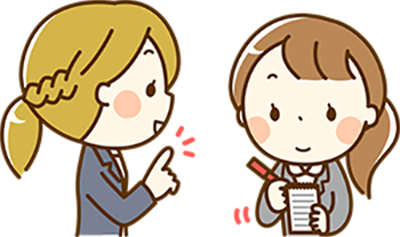

先輩 is someone who is usually older and more experienced. 後輩 signifies the “newbie” or someone who is often younger. 先輩 and 後輩 relationships are an important part of schools, workplaces, sports teams, or any other social/professional circles.
For example: If you are a first-year college student and someone else in your department is in their 3rd year, they would be the 先輩 and you would be the 後輩.
Although 後輩 is never used as an honorific, 先輩 can be used as an honorific to address those who are a senior to you. It is a nice way to build this kind of mentee and mentor relationship.
明日、佐藤先輩は来ますか?
Ashita, Satou senpai wa kimasu ka?
Will Sato (senior) come tomorrow?
The honorific can also be used without the name, similarly to 先生.
明日、先輩は来ますか?
Ashita, senpai wa kimasuka?
Will (Sato) senior come tomorrow?
It’s also important to note that a 先輩 will usually call their 後輩 with either no-honorifics or some form of casual honorific like さん, ちゃん, or くん.
たん – Tan and Informal Nicknames


たん, a variation on the honorific of ちゃん, can be like a cute nickname towards fictional, especially anime characters. It’s a common honorific for anime fans to use.
Please be aware that it’s is often considered cringy to use it with real-life people.
エミリアたんは俺の嫁だ!
Emilia tan wa ore no yome da!
Emilia is my waifu!
Positions and Titles


Positions and titles can also act as honorifics and should be used whenever possible, especially if you are a part of that company or organization. It can be used with or without the name to call the other person. Here are some examples of positions and titles:
社長 – Shachou – President of a Company
部長 – Buchou – Department Head of a Company
課長 – Kachou – Section Manager of a Company
総理(大臣) – Souri (Daijin) – Prime Minister
This can often be shortened to simply 総理 to mean prime minister.
Here are some examples where these positions and titles are used:
安倍総理は日本の雇用を増やそうとしている。
Abe souri wa nihon no koyou o fuyasou to shite iru.
Prime Minister Abe is trying to increase employment in Japan.
A lot of people also address Preminister Abe as 安倍さん. It’s also common to see people just say 安倍, especially when they don’t like them.
部長、今日の会議は何時からですか?
Buchou, kyou no kaigi wa nanji kara desu ka?
Department head, what time is today’s meeting?
Legal Honorifics


In legal or court situations, there are also honorifics that can be used alone or with a name. These can often be heard in news reports.
容疑者 – Yougisha – Suspect
被疑者 – Higisha – Accused Person
被告 – Hikoku – Defendant
原告 – Genkoku – Plaintiff
Here is an example:
佐藤容疑者は財布を盗んで逮捕されました。
Satou yougisha wa saifu o nusunde taiho saremashita.
Sato (suspect) stole a wallet and was arrested.
Other Honorifics


殿 – Dono
This honorific is old-fashioned but is still used today in letters, emails, or formal situations, especially after people’s titles. It is usually addressed from a higher to lower status
Other examples where you might encounter this is in movies and T.V. shows where it is set in samurai-society Japan.
As it can be rude in some situations and there are safer alternatives, it’s better to avoid it unless you know exactly when to use it.
For example, a beginning of a letter might be started with:
佐藤殿
Satou dono
Dear Mr. Sato
Note: In a Japanese context this is much more polite than saying “Dear Mr. Sato” in English.
御中 – Onchuu
This is a particular honorific used when you are sending mail to organisations instead of individuals.
In these cases sometimes there will be a return envelope with 行 after their name. 行 which means “to” is very casual so when sending back the envelope it is respectful to cross out the 行 and add 御中 to be more polite. Here is an example:
東和銀行 行 —-> 東和銀行
行御中
Touwa ginkou iki —-> Touwa ginkouikionchuu
To: Touwa Bank
氏 – Shi
氏 is sometimes used in situations when referencing or talking about a third person in a formal way.
田中氏は去年ノーベル賞を受賞しました。
Tanaka shi wa kyonen nooberu shou o jushou shimashita.
Mr. Tanaka won the Nobel prize last year.
夫人 – Fujin
This is similar to the English concept of “Mrs.”. It’s usually used to refer to the wife of a man who is a high society figure. Some examples would be the wife of a prime minister, political figure, or an important person in the company.
Mr. Satou is the company president and when referring to his wife you might say:
佐藤夫人は昨日パーティーに来ました。
Sato fujin wa kinou paatii ni kimashita.
Mrs. Sato came to the party yesterday.
Finally, Observe and Practice Honorifics!
The best way to figure out how honorifics work is to see them used in real-life situations. It can be a fun exercise to observe the way that Japanese people interact using honorifics through in-person conversations, T.V., or in movies etc…
However, be careful with anime and manga, as the characters sometimes don’t follow social norms. This can help you learn more about the complex social cues involved with using them. Also, don’t be afraid to practice and ask questions to native speakers. Be sure to keep an eye out for new ways of using honorifics as you delve deeper into the language and culture!
5 May 2020
Japanese Greetings and Goodbyes: The Ultimate Guide
(This article was reviewed and edited by native Japanese speakers to ensure accuracy.)
Parents in Japan often tell their children that あいさつは大事! or greetings are important! From a young age, it is essential to be polite and considerate in Japanese society. This is also reflected in the way that greetings and goodbyes have different forms based on formality. Furthermore, there are many Japanese words that don’t translate directly into English. Hopefully, this guide can make it easier to navigate different situations so that you can feel confident about Japanese greetings and goodbyes!
How Do You Say “Hello” in Japanese?
こんにちは – Konnichiwa
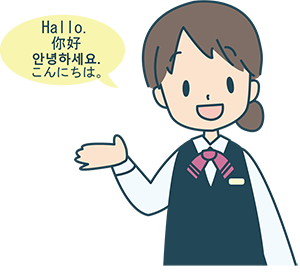

This might be one of the first words we learn when we begin our journey in understanding the Japanese language. However, did you know that こんにちは does not always work the same way as “hello”? It is actually necessary to be a bit more conscious of when to use it, in order to speak in a natural way.
こんにちは is an extremely time-sensitive greeting. In fact, the only time you should use it is when it is neither morning nor evening. It’s also important to use a greeting with an awareness of time when writing messages to other people, unless you don’t know when that person will be reading it.
This greeting is usually not used with certain friends and family members as it’s too formal and polite. Some people may use it with their friends.
Here are a few examples where we should not use it:
- Hello John! Do you want to go for dinner now?
- Hello Akane, I’m about to go for a morning jog!
Here is the correct time to use it:
Hello everyone, I would like to start this afternoon meeting.
みなさん、こんにちは。午後の会議を始めようと思います。
Minasan, konnichiwa. Gogo no kaigi o hajimeyou to omoimasu.
Informal “Hello”


In informal occasions, it’s possible to use some expressions in the same way as we would in English. These can all be interchanged with each other and there is no importance on the time it is used.
Only use these when the person you are talking to is family, some friends, the same age, or younger. Otherwise, wait until they allow you to start talking to them informally.
- よぉ – Yoo: A similar feeling to “hey!’ or “Yo” in English.
- ハロー – Haroo: This is “hello” as a borrowed English word. Words in English are considered “cool” or “cute” so some people might choose to use this greeting.
- おっす – Ossu: This greeting is normally used between young men and has a manly vibe to it. It may have originated from the greetings used in martial arts.
- ヤッホー – Yahhoo: The origin of this one is a bit mysterious but it might have some English origin to it. It has a nuance of getting someone’s attention or calling someone over. This expression is primarily used by young people.
- どうも – Doumo: This one is a bit more complex because the meaning of the word can be quite different depending on the context. However, there are cases where it is sometimes used informally as more of a “hello”. Even though this is considered informal, it can also be a reasonably polite expression, so you may use it with your boss or people who have a higher status.
There are more informal greetings than on this list, and these tend to be the slang used by the younger generation. Be on the lookout for new words that will likely pop up!
“Hello” on the Phone


In Japanese, there are different ways of greeting on the phone than face to face or written greetings. The way we greet differs based on the formality of the phone call. Here are the two types:
Informal: もしもし- Moshi moshi
It’s said that this word comes from the word, 申す、which means “to say”. Like the “hello” in English phone calls it is also used when we can’t hear the other person.
もしもし、聞こえる?電波が悪いみたいだね。
Moshimoshi, kikoeru? Denpa ga warui mitai da ne.
Hello? Can you hear me? I think the phone connection is bad.
もしもし、お母さん?今日の夜ご飯どうする?
Moshimoshi, okaasan? Kyou no yoru gohan dou suru?
Hello, Mom? What should we do for dinner?
もしもし isn’t appropriate in business situations.
Formal: はい、(your name)です。
In more formal, business or work-related situations, it is more common to answer the phone with はい, or yes, followed by your name.
はい、山本です。
Hai, Yamamoto desu.
Yes (Hello), this is Yamamoto speaking.
Formal: お電話ありがとうございます。
If you are receiving calls from your customers, it is common to say お電話ありがとうございます or thank you for calling.
お電話ありがとうございます。アップルストア渋谷店です。
Odenwa arigatou gozaimasu, Appuru sutoa shibuyaten desu.
Thank you for calling, this is the Shibuya branch of the Apple store.
Other “Hello’s”


お疲れ様です – Otsukaresama desu (formal) and お疲れ – Otsukare (informal)
This is a unique Japanese phrase that is used during all times of the day, especially in business situations. It can be both a greeting and a farewell. it is usually acknowledging your coworker, teammate, or anyone you might be working together with, for their hard work. For example, if you are working as a server at a restaurant and you need to greet your coworker who just finished their shift, you might say:
お疲れ様です!今日はどうでしたか?
Otsukaresama desu! Kyou wa dou deshita ka?
I appreciate your work! How was it today?
Time Sensitive Greetings
Good Morning


There are a few different ways to say “good morning” based on formality. In general, it should be used from sunrise to sometime before 10am. But people have different opinions about when you should stop saying おはようございます.
Formal: おはようございます – Ohayou gozaimasu
This is the most formal way of saying “good morning” and can be used with strangers, those older than you, and anyone you want to greet with respect. In certain industries, such as music and television, where they tend to work and sleep late, they sometimes use this greeting at all hours of the day!
先生、おはようございます。
Sensei, Ohayougozaimasu.
Good morning, teacher.
Informal: おはよう – Ohayou
Without ございます, this is the more informal version that you can use with some friends and family.
お兄ちゃん、おはよう!
Oniichan, ohayou!
Good morning, brother!
Good Afternoon


In Japanese, there is no real phrase like “good afternoon”. The right word would be こんにちは- Konnichiwa. As discussed earlier, although こんにちは is often translated as “hello”, it is used in a more time-sensitive context similar to “good afternoon”. It should be used between 11am to 5pm or sunset. Again, people have different opinions about exactly when you should say こんにちは. (See the previous section on こんにちは for example sentences)
There’s no informal version of こんにちは. Some people may still use it with their friends.
Good Evening


For “good evening”, there is only one word, こんばんは – Konbanwa, which is generally used after around 5pm or sunset.
There’s no informal/casual version of こんばんは. Some people may still use it with their friends.
山本さん、こんばんは。月がきれいですね。
Yamamoto-san, konbanwa. Tsuki ga kirei desu ne.
Mr. Yamamoto, good evening. The moon tonight is pretty.
Other Common Greetings!
Long Time No See!


Like many of the other greetings, “long time no see” can also be said in several ways depending on the level of formality. All of these greetings can also mean “it has been a while”.
Formal: お久しぶりです – Ohisashiburi desu
This greeting is in the formal form and can be used in any situation where the other person needs to be addressed with respect. If you’ve graduated from college and bump into your high school teacher you might say:
先生、お久しぶりです。
Sensei, ohisashiburi desu.
Teacher, long time no see!
Informal: 久しぶり- Hisashiburi
This is the informal form of お久しぶりです which can be used with friends and family.
メグミちゃん、久しぶり!アメリカ留学どうだった?
Megumi-chan, hisashiburi! America ryugaku dou datta?
Megumi, long time no see! How was your study abroad in the US?
Formal: ご無沙汰しています- Gobusata shiteimasu
This may sound like a rather formal phrase but it’s quite common for people say in person. It’s also common in written Japanese.
ご無沙汰しています。返事が遅れてすみません。
Gobusata shite imasu. Henji ga okurete sumimasen.
It has been a while. I’m sorry for the late reply.
How Are You?


In the Japanese language, “how are you?” does not work quite the same way as in English. In general, the phrase should only be used when you haven’t seen the other person for some time.
Here are some common English situations where it does not translate to Japanese.
- At the cash register, ticket counter, or any other situation where you don’t know or never met the other person.
- If you see the person every day.
- To someone who seems to have a grave illness or who wouldn’t feel comfortable answering with an honest response.
- As a casual greeting, replacing “hello”.
There are two ways of saying “how are you?” with different degrees of formality. It is also commonly preceded by “long time no see”.
Formal: お元気ですか?- Ogenkidesuka
The word 元気 means “energy” or “health”. It literally translates to “do you have energy?” or “are you healthy?”. However, it is more like the phrase, “how have you been?”. お元気ですか?should be used in formal contexts.
山田さん、お久しぶりです!お元気ですか?
Yamada-san, ohisashiburi desu! Ogenki desuka?
Mr. Yamada, long time no see! How have you been?
Informal: 元気?- Genki?
This is the informal version of お元気ですか?It can be used casually with friends and family.
めぐみちゃん、久しぶり! 元気?
Megumi-chan, hisashiburi! Genki?
Megumi, long time no see! How have ya been?
In both cases, notice how the “long time no see” phrase which commonly precedes “How are you?”, matches in the level of formality. お久しぶり goes with お元気ですか?and 久しぶり goes with 元気?
“Nice to Meet You!” and Introducing Yourself
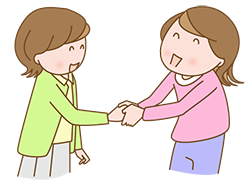

Formal: 初めまして- Hajimemashite
In Japanese, it’s common to use the formal form until it is clear where the person lies, in terms of social hierarchy. When you first meet, if there is any doubt about the level of formality make sure to use the phrase, 初めまして- Hajimemashite. It’s usually followed by saying your name.
初めまして、クリスティーナです。
Hajimemashite, kurisutiina desu.
Nice to meet you! I’m Christina.
始めまして sounds quite formal so in a more cassual situation, you may use other expressions like どうも。
どうも、クリスティーナです。
Doumo, kurisutina desu.
Hi, I’m Christina.
Keep in mind that 初めまして does not directly translate to “nice to meet you” in every situation. In English, it is common to say “nice to meet you” or “nice meeting you” at the end of your introduction. In Japanese, this phrase can only be used at the beginning. Instead, here are some ways to wrap up the introduction.
Formal: よろしくお願いします – Yoroshiku onegaishimasu
This translates to something like “please take care of me in the future”. Although it may seem a bit strange in English, it is common in Japan to say this to someone you meet for the first time. This is the formal version of the phrase.
初めまして、渡辺けいこです。よろしくお願いします。
Hajimemashite, watanabe keiko desu. Yoroshiku onegaishimasu.
Nice to meet you, I’m Keiko Watanabe. Please take care of me in the future.
In business situations, it is also common to use 以上よろしくお願いいたします at the ends of emails. In this situation, it would mean something like “please take care of the above”, and you would say:
以上よろしくお願いいたします。
Ijou yoroshiku onegai itashimasu.
Please take care of the above.
Informal: よろしく – Yoroshiku
This is the informal version of どうぞよろしくお願いします. If you’ve already figured out whether the person you just met is of an equal or lower social hierarchy (they could be the same age, younger, or a peer in school), you can already start using the informal form!
初めまして!じゅんこだよ。よろしく!
Hajimemashite! Junko da yo. Yoroshiku!
Nice to meet you! I’m Junko. Please take care of me in the future!
Time to Say “Goodbye”
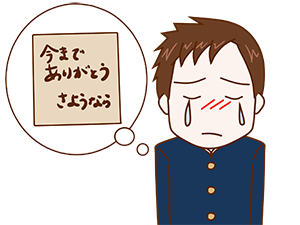

The common word that is usually learned for “goodbye” is さようなら- Sayonara. However, it is not accurate to translate “goodbye” to さようなら. It is most often used when you probably won’t see the other person for a while.
Alternatively, in Japanese schools, it is common for students to say さようなら to their teachers. This word can be used in both formal and informal contexts. Here are some examples:
Formal: If you’re saying goodbye to an older coworker who is moving abroad to a new job, you might say:
さようなら。またいつかお会いできるのが楽しみです!
Sayonara. Mata itsuka oai dekirunoga tanoshimi desu!
Goodbye, I’m looking forward to meeting you again sometime.
Informal: If you’re saying goodbye to a friend who is moving back to their hometown in another country, you might say:
さようなら。元気でね!また会えるといいね。
Sayonara. Genki de ne! Mata aeruto iine.
Good bye. Stay well! Hope we can meet again!
Common Ways to Leave a Conversation or Location


Instead of さようなら, it is actually more common to use certain phrases to leave a location or conversation.
Formal: 失礼します – Shitsurei shimasu
This is a formal way to leave a conversation or location. It’s especially common in business situations. It translates to something like “please excuse me”. It is quite common to say this as a way to leave.
失礼いたします is a slightly more polite version. It is also common to use 失礼いたします when you end a phone conversation in a business situation.
今日はもう遅いので、失礼します。
Kyou wa mou osoi no de, shitsurei shimasu.
It’s already late today so please excuse me.
Formal: お邪魔しました – Ojama shimashita
This can be used when you are leaving someone’s house. It can translate to something like “I have bothered you” but actually means more like a “thank you for having me”. It shows respect for being allowed inside someone else’s home.
夜ご飯美味しかったです!お邪魔しました。
Yorugohan oishikatta desu! Ojama shimashita.
The dinner was delicious! Thank you for having me.
Even though this one is formal, a lot of people use it when they leave their close friends’ house because there’s no informal version.
Formal: お疲れ様でした – Otsukaresama deshita
As discussed earlier, this phrase–which can also be a greeting–is a common parting phrase. It can be used when you are leaving work, sports practice, or some kind of activity that uses effort and energy.
When it means “goodbye”, it can mean something like “thank you for your hard work”.
今日のイベント大成功でしたね。お疲れ様でした!
Kyou no ibento daiseikou deshita ne. Otsukaresama deshita!
Today’s event was a huge success. Thank you for your hard work!
Informal: お疲れ – Otsukare
This is the informal version of お疲れ様でした. For example, if you finished playing a soccer match, you could tell your teammate:
今日の試合は負けたけど、いいせんいったね!お疲れ!
Kyou no shiai wa maketa kedo, iisen itta ne! Otsukare!
We lost today’s match, but it was pretty close! Thank you for your hard work!
Formal: お先に失礼します – Osaki ni shitsurei shimasu
This is a formal phrase used if you’re leaving earlier than others. For example, maybe your co-workers are still at the office but you have finished your work. It can mean something like “please excuse me early”.
子供を迎えに行かないといけないので、今日はお先に失礼します!
Kodomo o mukae ni ikanaito ikenainode, kyou wa osaki ni shitsurei shimasu!
I have to pick up my kids today, so please excuse me early!
Informal: お先に – Osaki ni
This is the informal version of お先に失礼します. If you’re studying with some classmates but need to leave early, you might say:
ごめん、今日はもう家に帰らないと!お先に!
Gomen, kyou wa mou uchi ni kaeranai to! Osaki ni!
Sorry, today I have to head home now. Excuse me early!
Casual and Other Goodbyes


Like the “hello”, there are numerous casual ways of saying “goodbye”. These you can use with friends and family! Here are a some examples:
- またね – Matane: This is like a “see ya!’ in English. This word can be used when you think you’ll probably see this person again.
- じゃーね – Jaa ne: This one translates to mean something like “bye”. It sounds very casual.
- バイバイ- Baibai: This is a English borrowed word from “Bye Bye”. Since English feels more trendy, this way of saying “goodbye” can seem more cool!
- また明日! – Mata ashita: This means “see you tomorrow!” and is also a very casual parting phrase.
Good Night


If someone is going off to sleep you can say おやすみなさい – Oyasuminasai (formal) or.
Formal: おやすみなさい – Oyasuminasai
If you are on a business trip with your superior (Mr. Murayama) you might say at the end of the day:
村山さん、おやすみなさい!
Murayama-san, oyasuminasai!
Mr. Murayama, good night!
Informal: おやすみ – Oyasumi
If you’re sleeping over at your friend’s (Kazuma’s) place you might say:
カズマくん、おやすみ!
Kazuma-kun, oyasumi!
Kazuma, good night!
Body Language and More Tips
As in all languages, body language can be just as meaningful in Japanese as the words themselves. When greeting and saying goodbye, here are a few final tips:
- It is common to lower the head instead of a handshake or hug. Generally, Japanese people will nod slightly for informal situations and bow a bit deeper for more formal greetings and goodbyes.
- Waving the hand to signal “goodbye” and “hello” can also be common among friends and family.
- It’s also important to be aware of your social position and to not greet everyone by their first name. It’s generally safer to use the last name to greet and say farewells to those who are older and more established than you.
I hope that this guide has been helpful in figuring out the complexities of greetings and goodbyes in the Japanese language. Since many of these concepts are different from the way it works in English, it may take some time and real-life situations to achieve a solid understanding. You may even discover some new ways to say “hello” and “goodbye” with time and experience! Good luck and がんばれ!
26 April 2020
10 Japanese Loanwords We Use in English
(This article was reviewed and edited by native Japanese speakers to ensure accuracy.)
English speakers tend to look at Japanese as an ancient and arduous language, which is far away from other idioms. However, Japanese words are everywhere in the English language, and we commonly (and fluently) use them as part of our daily conversations.
The best starting point for learning Japanese is to identify these loan words and use them as a base to start building your fluency.
Here, you will find 10 Japanese words that we use in English habitually. It is interesting to see how often the pronunciation of some words may change. Besides, the original Japanese meaning can sometimes differ from the adapted English version. Understanding these differences can be one of the keys to master the Japanese language.
1. Hentai
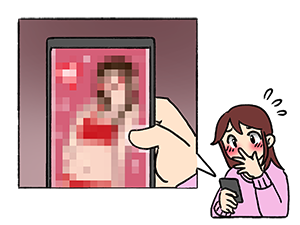

Japanese: 変態 (hiragana: へんたい)
Kanji details: 変 (へん) unusual, strange + 態 (たい) attitude, condition, appearance
In the English language, it is mainly used to describe pornographic cartoons, especially of Japanese origin or drawn in a Japanese style.
In everyday language, the term primarily refers to a person with pervasive sexual habits or who expresses his libido in an inappropriate way.
There are also more technical uses. In biology and physics terminology, it describes the act of transformation, typical of anthropoids such as insects and crustaceans.
The word originally appeared in the Meiji era (1868 – 1912) to describe abnormal or unusual traits, including paranormal powers and psychological disorders.
お前、見かけによらず変態だな!
Omae, mikake ni yorazu hentai da na!
Despite appearances, you are a pervert!
2. Karaoke


Japanese: カラオケ
Kanji details: N/A (This word is written in Katakana.)
In the Japanese language, karaoke is the clipped compound of 空 (kara, empty) and オーケストラ (ōkesutora, orchestra). The literal meaning of “empty orchestra” refers to a piece of music without vocals
Karaoke first became popular in English in 1979. Outside Japan, amateur singers usually perform in a common area at bars and pubs, in front of an audience that includes strangers.
In Japan, “karaoke boxes” are common places to enjoy karaoke. They offer private karaoke rooms where people can sing in front of their friends only.
Moreover, different versions of karaoke devices, such as wankara (ワンカラ, “solo karaoke”) are available in Japan. This is a smaller karaoke box which serves only a single person, with no audience.
カラオケに行かない?
Karaoke ni ikanai?
Do you want to go to karaoke?
3. Tsunami
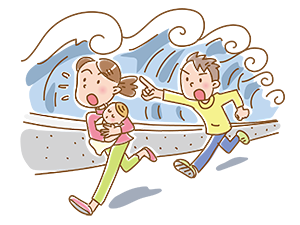

Japanese: 津波 (hiragana: つなみ)
Kanji details: 津 (つ) port, harbour + 波 (なみ) waves
A tsunami is a gigantic sea wave produced by a seaquake or undersea volcanic eruption. The word refers to a large-scale wave propagation phenomenon, that occurs in oceans due to sudden changes caused by earthquakes, volcanic activity and mountain collapse.
津波が来ますので注意してください。
Tsunami ga kimasu node chūishite kudasai.
A tsunami is coming, so please be careful.
4. Sushi
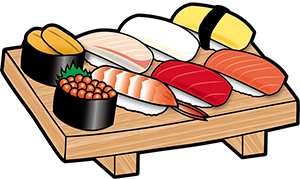

Japanese: 寿司 (hiragana: すし)
Kanji details: 寿 (す) longevity, congratulations + 波 (司) official
Undoubtedly, sushi is the quintessence of Japanese food for those living outside this country. It is prepared with vinegar rice and a variety of ingredients, such as seafood.
The increasing popularity of this delicacy around the world has resulted in a wide variety of styles of sushi. This includes the use of ingredients which are not typically used in Japan, like cucumber, avocado and tropical fruits.
In Japan, when people talk about sushi, they usually refer to “nigiri” whereas in Western countries, people may think of “maki” when they talk about sushi.
寿司の具は何が好きですか。
Sushi no gu wa nani ga suki desu ka?
Which sushi ingredients do you prefer?
5. Karate
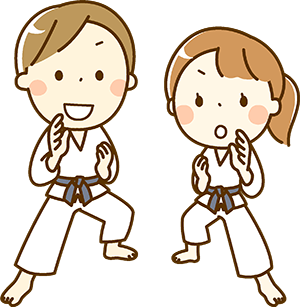

Japanese: 空手 (hiragana: からて)
Kanji details: 空 (から empty) + 手 (て) hand
Karate is a martial art featuring punching, kicking, knee and elbow strikes, and other open-hand techniques. It was introduced in Japan in the early 20th century and systematically taught after the Taishō era (1912–1926).
English-speakers began to use the word karate in the 1960s to refer to all striking based Asian martial arts. In Japan, karate refer to this specific from of martial art.
中学のときは空手部でした。
Chūgaku no toki wa karatebu deshita.
I used to be in a karate club when I was in junior high school.
6. Futon


Japanese: 布団 (hiragana: ふとん)
Kanji details: 布 (ふ) linen, cloth + 団 (とん) group, association
Futons are maybe one of the most emblematic elements of Japanese décor. This traditional bedding consists of a mattress and a duvet, which are pliable to be stored away in a closet when not in use.
What people call “futon” in the West is bigger, as they have the dimensions of a western mattress. Moreover, they are thicker, and they do not need to be aired regularly. In contrast, traditional Japanese mattresses (known as 敷き布団, shikibuto) must be aired in the sun frequently to prevent mould and to keep them free of mites.
In Japan, Western-style futon are simply known as ベット (beddo, bed) and generally not considered “futon”.
毎朝布団を片付けています。
Maiasa futon o katazuketeimasu.
Every morning, I put away my futon.
7. Emoji


Japanese: 絵文字 (hiragana: えもじ)
Kanji details: 絵 (え) picture + 文 (も) decoration, figures + 字 (じ) character, letter
Emoji are smileys used in electronic messages and web pages. In Japan, the word emoji refers to Unicode pictograms, or typographic approximations, where a combination of letters and pictures is used to describe a word or a sentence. In different contexts, emoji can also describe a picture that replaces words or symbols (for example, a mark indicating an emergency exit).
Although numerous claims have been made to who invented the first emoji, Japan was the first country to widely adopt them in 1997. Their popularity increased worldwide in the 2010s after being introduced in several mobile operating systems. The word emoji itself derives from the Japanese terms for “pictogram”.
娘は絵文字をよく使う。
Musume wa emoji wo yoku tsukau.
My daughter often uses emoji.
8. Zen


Japanese: 禅 (hiragana: ぜん)
Kanji details: 禅 (ぜん) dhyāna (profound meditation), Buddhism
In the Japanese language, 禅宗 (ぜんしゅう, zenshū) refers to certain branches of the Mahayana Buddhism school. The Zen doctrine emphasises the use of meditation to achieve an intuitive illumination of the mind. To this end, rigorous self-restraint, constant meditation and in-depth insight into the nature of mind and things are essential.
Over the last centuries, the term zen has been adopted in Western countries, but with an entirely different meaning, which is instead not used in Japan. In the English language, zen is used more as slang for feeling peaceful and relaxed. When using the word zen, English-speakers refer to a state of inner peace that is not linked to Buddhism teachings. On the contrary, “being zen” is often associated with a minimalist or laid-back lifestyle.
禅は欧米でも人気があります。
Zen wa obei demo ninki ga arimasu.
Zen is popular also in Western countries.
9. Kombucha


Japanese: 昆布茶 (hiragana: こぶちゃ)
Kanji details: 昆 (こ) descendants, insect + 布 (ぶ) linen, cloth + 茶 (ちゃ) tea
Kombucha is a fermented, lightly alcoholic and effervescent, sweetened black or green tea. This beverage, consumed for its supposed health benefits, is believed to have originated in Manchuria.
In Japan, the term kombucha (commonly called kobucha) refers to kelp tea, which is made with powdered kombu, a type of edible kelp. In other words, it is an entirely different beverage. Linguists advocate that this may be a case of a misapplied loanword from Japanese. The correct Japanese kanji for fermented tea are 紅茶キノコ (kōcha kinoko, literally “red tea mushroom”).
昆布茶は欧米やオーストラリアで、健康飲料として売られています。
Kobucha wa oobei ya oosutoraria de, kenkou inryou toshite urareteimasu.
In Europe, America and Australia, kombucha is sold as a health drink.
10. Sudoku


Japanese: 数独 (hiragana: すうどく)
Kanji details: 数 (すう) number, figures + 独 (どく) single, alone
Sudoku is a logic-based, number-placement puzzle which objective is to fill a 9×9 grill with digits so that each column and each row contains all the numbers from 1 to 9.
The game first appeared in 1979 and was published by the Japanese puzzle company Nikoli under the name of Sudoku (“single number”) in 1986. The puzzle officially gained its popularity outside Japan in 1997, when a judge from Hong Kong developed a computer program to produce unique grills. Sudoku was initially introduced in Britain in 2004.
世界数独選手権は2006年から開催されています。
Sekai sudoku senshūken wa 2006 nen kara kaisaisareteimasu.
The World Sudoku Championship has been held since 2006.
25 April 2020
How to say “cute” in Japanese
(This article is reviewed and edited by native Japanese speakers to ensure accuracy.)
You might already be familiar with the Japanese word “kawaii” for the word “cute”. There are countless anime, manga, and even an entire “kawaii” culture. In Japan, children and adults alike, embrace the childishness and cuteness of everything. Did you know that there are actually many words in Japanese that are used to express “cute” in different contexts?
Here are seven words that can mean “cute”, or used to compliment someone, and how to use them!
1. かわいい – Kawaii


One of the most famous words in the Japanese language, かわいい, can have many meanings. It can sometimes be confusing to understand all of the unique nuances.
It can be used to describe something cute and small: puppies, babies, children, etc…
その子犬かわいいね。
Sono koinu kawaii ne.
That puppy is so adorable/cute
However, it can also be used to describe something that is small because being small is associated with cuteness.
この料理かわいいね。
Kono ryouri kawaii ne.
The dish is quite small.
かわいい can also be used to describe someone attractive, particularly a woman. Other than cute, it can often mean that the woman has a childish appearance or a sweet personality.
AKB48の女の子たちめっちゃかわいい。
AKB48 no onnanoko-tachi meccha kawaii.
The girls in AKB48 are very cute.
It is also possible to use it to describe clothing, accessories, and items that are cute.
Pretty much anything that’s adorable or cute can be かわいい!Just make sure to keep in mind that there are big gender differences in spoken Japanese. For example, men will rarely use this word to complement each other about their outfits or items. This is because it’s a word that’s often associated with femininity.
スカートかわいいね。
Sukaato kawaii ne.
That skirt is cute.
Sometimes there is also a possibility to use かわいい when refering to someone who is endearing and cute. This could even apply to a middle-aged man and often young women will say this. Keep in mind that this does not mean that the man is attractive, it is just that there is something adorable about him. If you saw a middle-aged man with an ice cream cone or with a tiny poodle you might want to say:
あのおじさんかわいい!
Ano ojisan kawaii!
That middle-aged man is cute!
The last thing I wanted to add is that many Japanese learners easily confuse かわいい (kawaii) with a very similar sounding word, 怖い (kowai). 怖い means scary. If you’re planning to tell a special someone that they are かわいい, make sure to say the right word!
2. かっこいい – Kakkoii


This is a compound word that includes looks (かっこ) and good (いい). Just like the word “cute”, it is useful when we want to express attraction towards someone. However, compared to かわいい, it is often used to describe men. It usually means that you admire or look up to them. Other synonyms include handsome, good-looking, and cool.
鈴木くんかっこいいよね。
Suzuki-kun kakkoii yo ne.
Isn’t Suzuki-kun handsome?
人を助けるのかっこいい!
Hito o tasukeru no kakkoii!
It’s cool to help someone!
かっこいい can be also be used to describe clothing, accessories, and things that have a cool style. It’s usually associated with men but can also apply to women. When I think about this word, I imagine motorcycles, rock bands, or cowboy boots!
その革ジャンかっこいいね。
Sono kawajan kakkoii ne.
That leather jacket is cool.
When used towards women, it generally means that the woman is cool. Make sure not to use かっこいい if you want to describe a woman as being attractive in a cute way.
初めての女性宇宙飛行士なんだって。かっこいい。
Hajimete no josei uchuu hikoo-shi nan datte. Kakkoii.
I hear she is the first female astronaut. She is so cool.
3. キュート – Kyuuto
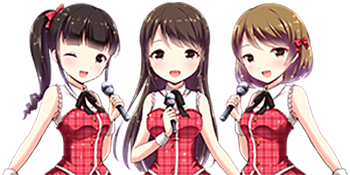

キュートis an English loan word from the word “cute”. There is a general feeling in Japan that foreign words are especially stylish and trendy. If you’ve been to Japan, maybe you’re familiar with the random English words on T-shirts or in J-pop song lyrics. When the word “cute” is expressed as キュート, it’s often used for advertisements, Japanese idol groups, and things that are fashionable.
キュートなバッグ。
Kyuuto na baggu.
A cute/stylish handbag.
4. きれい – Kirei


This word can be used to describe something or someone that is pretty or beautiful in a casual way. This usually isn’t a word used towards men, and it is more often towards women.
きれい as a compliment for a woman generally sounds more mature than かわいい.
佐藤さんってきれいじゃない?
Satou-san tte kirei janai?
Isn’t Satou-san beautiful?
Another meaning for きれい is clean. It may seem a bit odd that the same word for pretty could mean clean. However, a reason for this double meaning is that Japanese culture values cleanliness.
部屋きれいにして!
Heya kirei ni shite!
Clean your room!
5. 美人 – Bijin


The word 美人 is made up of two kanji characters meaning beauty (美) and person (人). Compared to some of the other words, it is simple to use as there is only one definition. It means a “beautiful woman”. This word can have a classy and respectable connotation.
ブラジルのモデルは美人です。
Burajiru no moderu wa bijin desu.
The fashion models from Brazil are beautiful.
You can also say 美女 (bijo – beautiful woman).
美女の国に行きたい。
Bijo no kuni ni ikitai.
I want to go to a country of beautiful women.
And 美男 (binan -beautiful man).
美男美女のカップルって羨ましい。
Binan bijo no kappuru tte urayamashii.
I envy beautiful couples.
6. 美しい – Utsukushii


During the Heian period (~7th-10th centuries) in Japan, 美しい was actually used in the same way as the modern かわいい. However, over time it has evolved into meaning beautiful. It is considered a classy word, often used in Japanese writing to express deep beauty. It can be used to describe landscapes, color, sound, people, and art.
モネの作品は色使いが美しいです。
Mone no sakuhin wa iro-zukai ga utsukushii desu.
In Monet’s works, the use of colors are beautiful.
7. イケメン – Ikemen
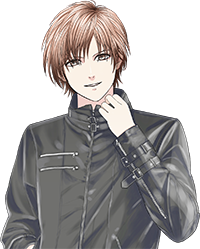

After appearing in a magazine around 1999, this word started to gain popularity among the younger generation. It comes from the phrase meaning cool (いけてる) and the word “mens” (メンズ) combining to form イケメン. It’s a slang that is used to describe men that are attractive or hot. It’s usually a word used to gossip or talk between friends. Keep in mind that it’s not too common to tell someone directly that they are イケメン。
サッカー選手のクリスティアーノ・ロナウドはイケメン。
Sakkaa senshu no kurisutiaano ronaudo wa ikemen.
The soccer player, Christiano Ronaldo, is so hot/cute.
Guys being “cute” vs. Girls being “cute”
Now that we’ve gone through the meanings of certain Japanese words and how they relate to the word “cute”, it might be useful to clarify the gender differences. In English we can use “cute” as a word for attraction towards both women and men. However, in Japanese it can be a bit more complicated. Here is an overview!
- “That guy is cute”
In Japanese, it’s necessary to be a bit more specific in what you mean by “cute”. It would be unlikely to use かわいい, unless a guy actually had a girly, feminine, and childish look. Instead, choose かっこいい if you think the guy is handsome, cool, or admirable. If you want to be a bit more trendy or if the guy is hot, try using イケメン.
- “That girl is cute”
When describing women, it’s also important to be mindful of what kind of “cute” you want to express. If the woman is attractive in an adorable, feminine, and innocent way, かわいい would be the way to go. To express that she is beautiful, 美人 or 美しい would be a good choice. If you mean that she’s pretty in a more casual way, use きれい.
Other ways to translate “cute” to Japanese
There are a few other ways in which “cute” can also be used in English, that might be difficult to translate to Japanese. In certain situations, “cute” is used in a way that means that you’re taking something too lightly. In these situations, it would be translated with あまちゃん.
頭がいいと思ってるの?あまちゃんだね。
Atama ga ii to omotteru no? Amachan dane.
Oh, you think you’re smart? That’s cute.
In English, there are also times when “cute” can be used to mean “childish” . In those cases it would be translated with 子供っぽい.
この会議は真剣なので、子供っぽいコメントはやめてください。
Kono kaigi wa shinken’nanode, kodomoppoi komento wa yamete kudasai.
This meeting is serious, can you stop making cute comments?
In this way, there are many situations where the word “cute” might have different translations in the Japanese language. As you continue to learn and become familiar with Japanese, you might notice more and more words that could mean something similar to “cute”. Part of the joy of language learning can be the discoveries of new words that can sometimes only exist in another language. I hope this guide has been helpful in mastering the word “cute” in Japanese!

